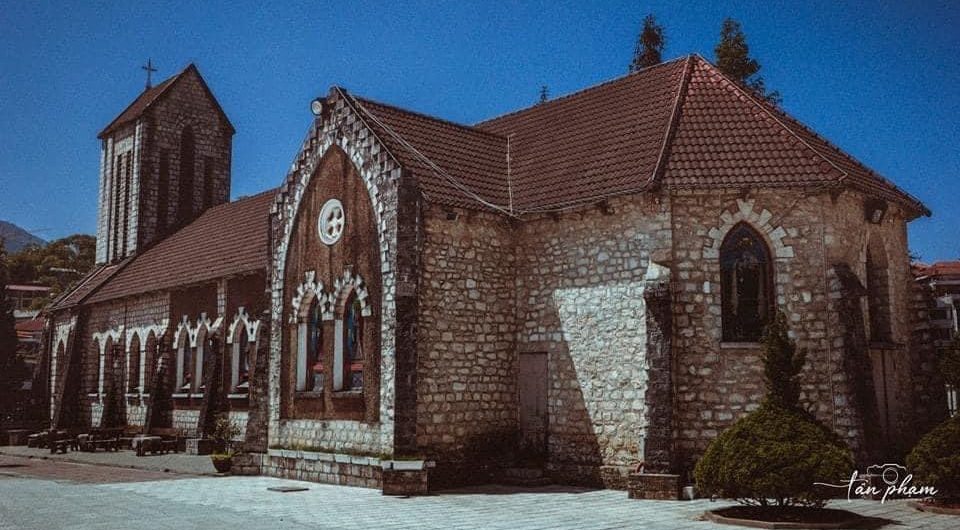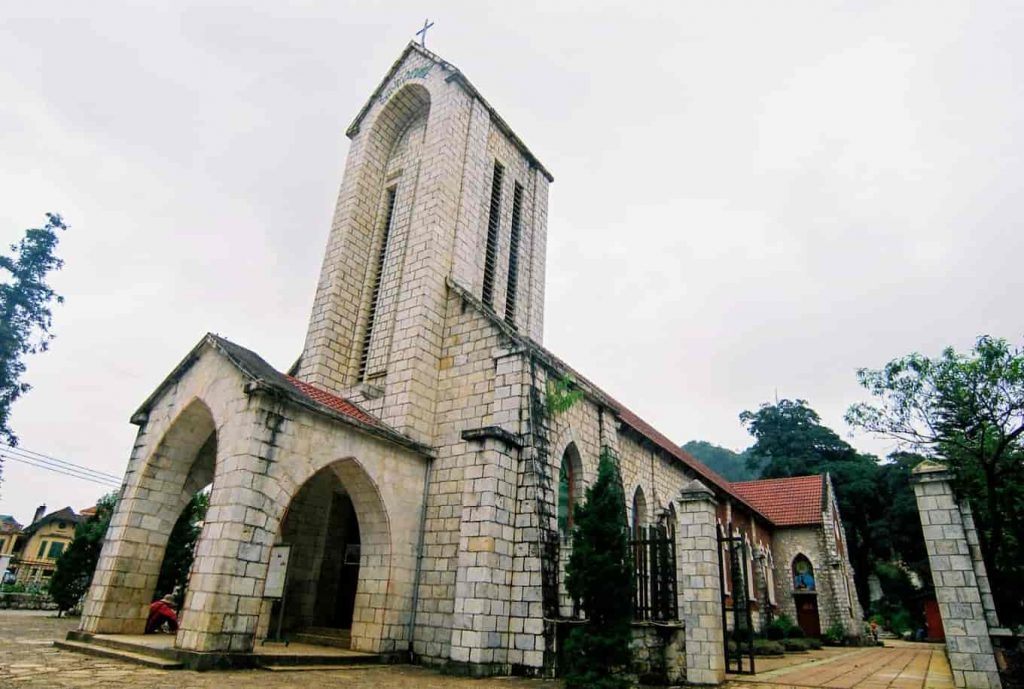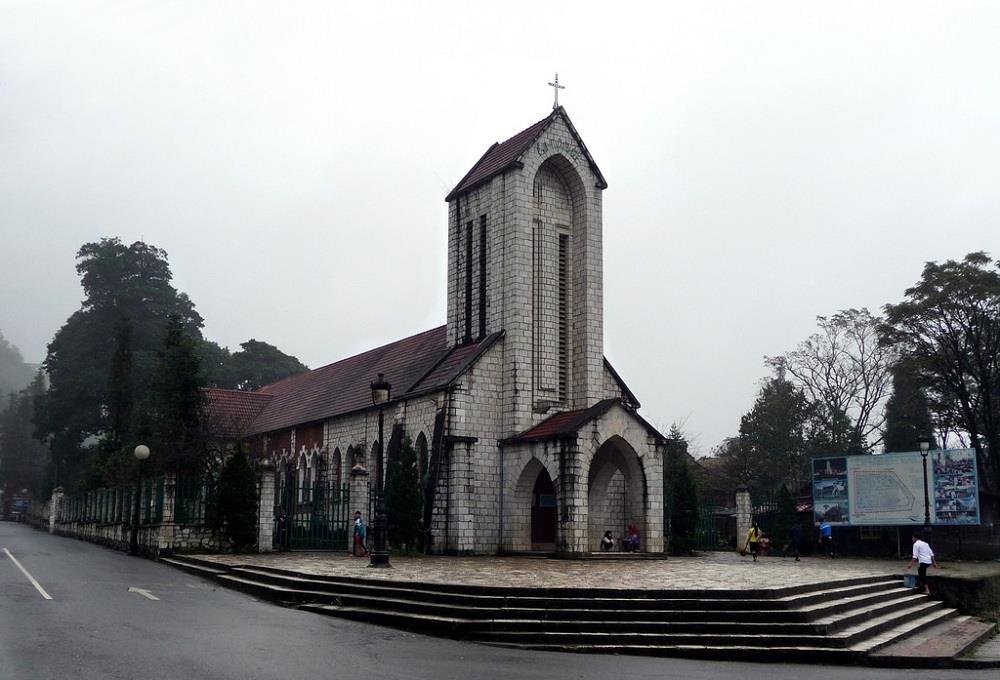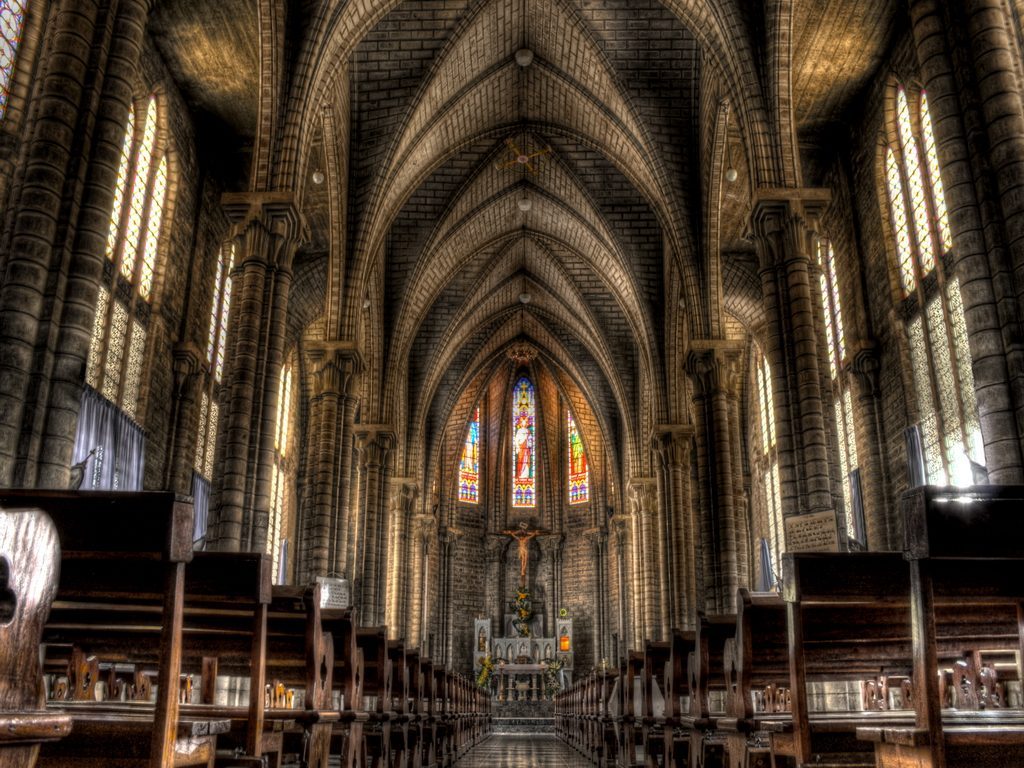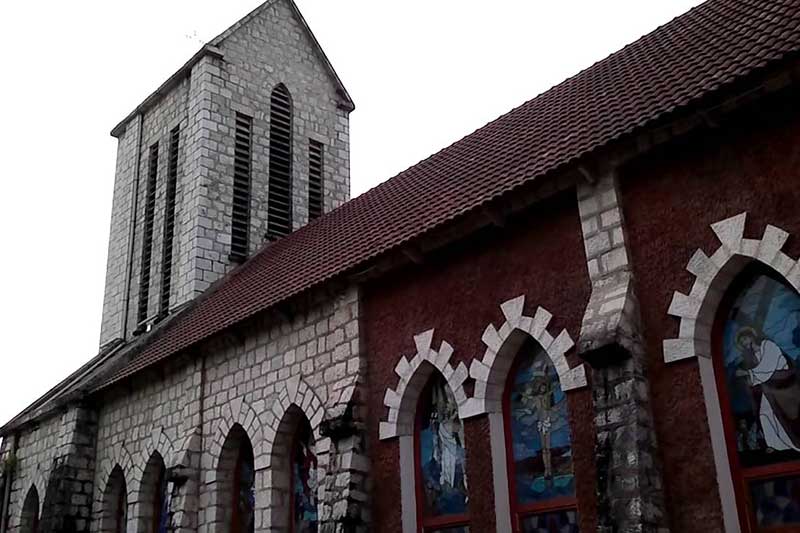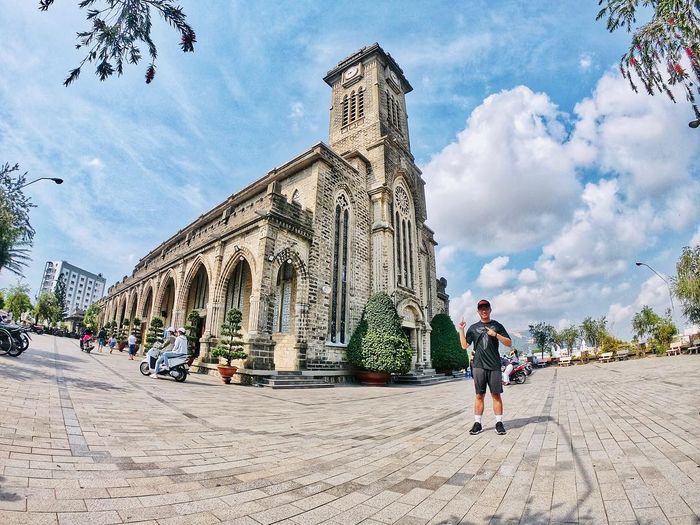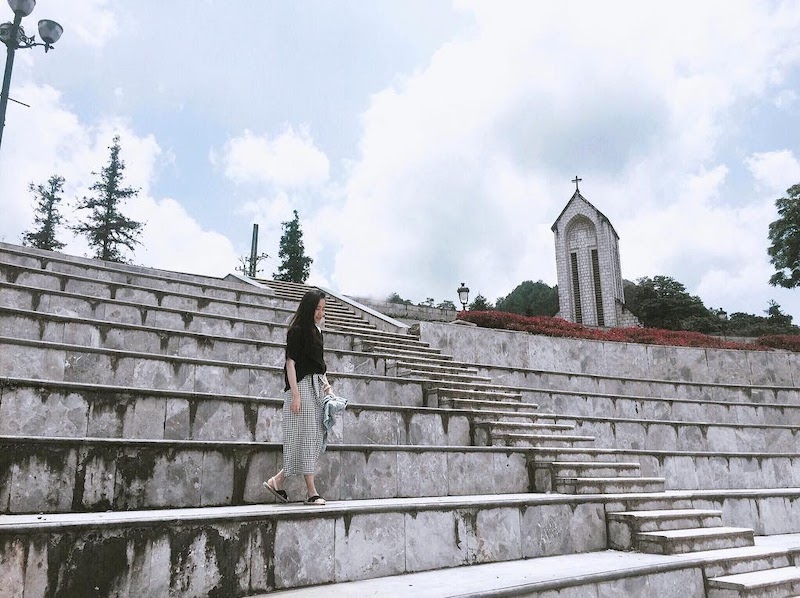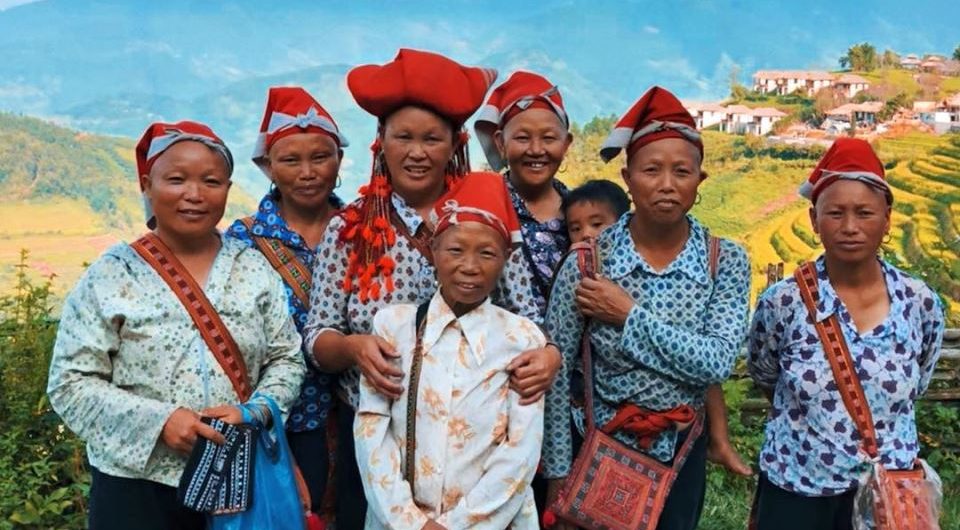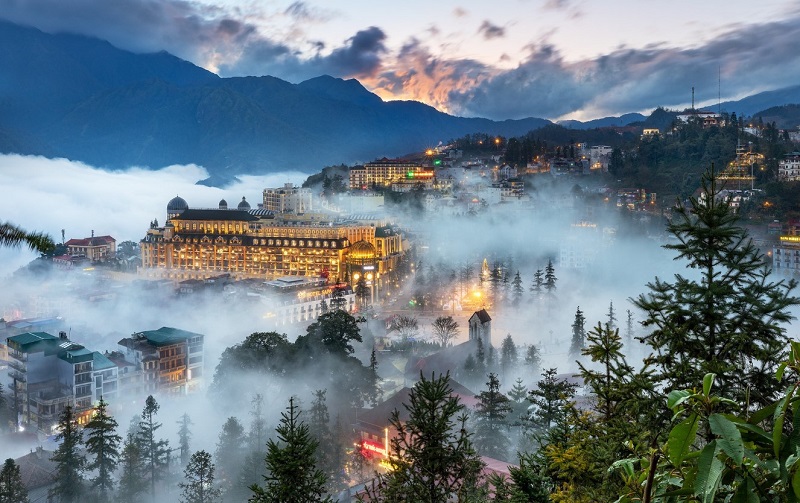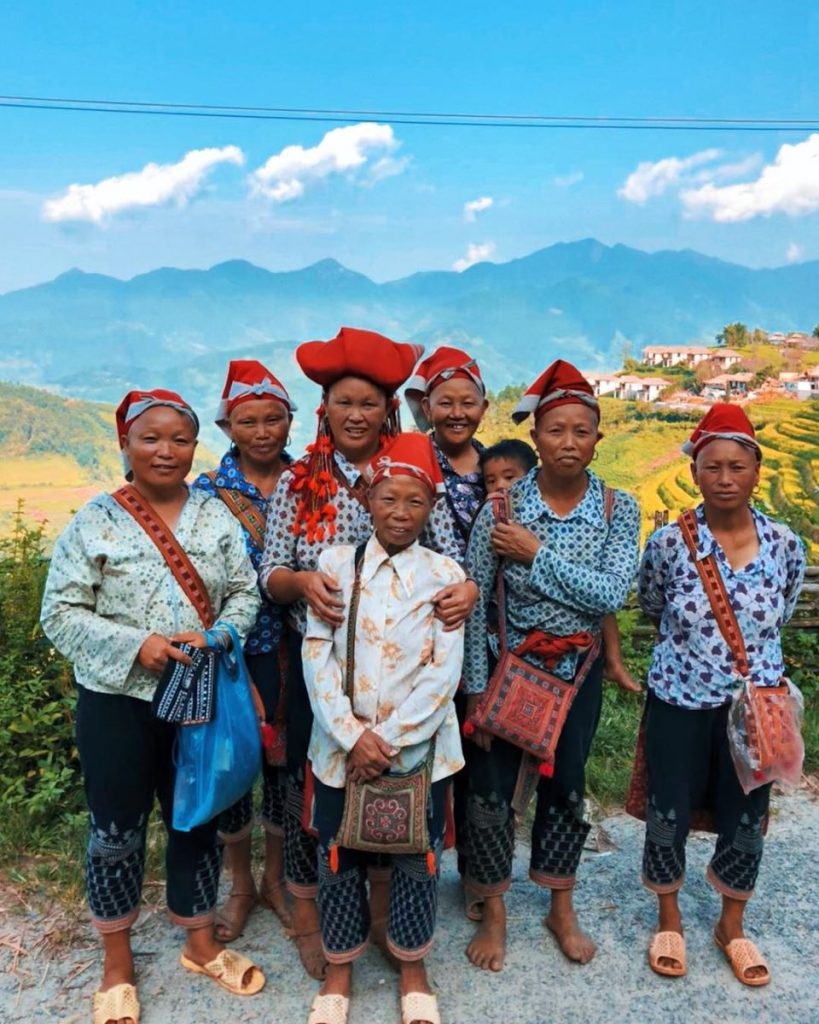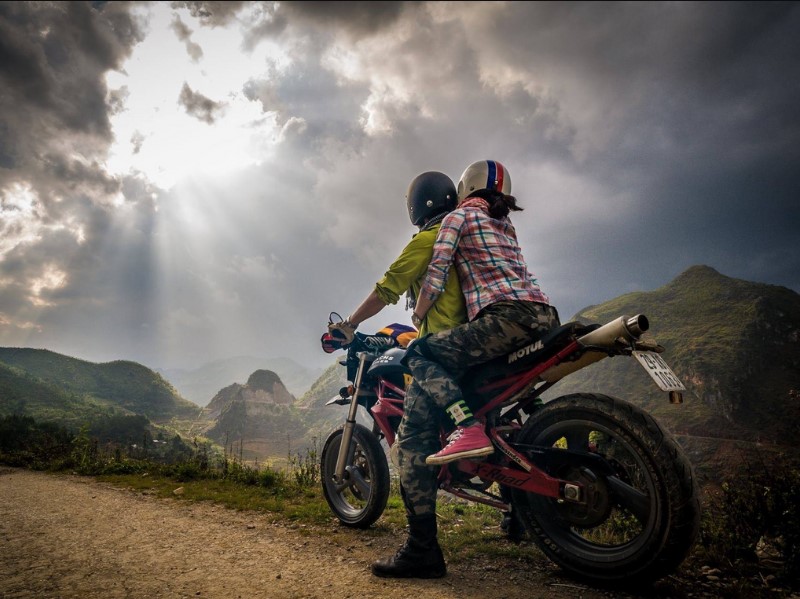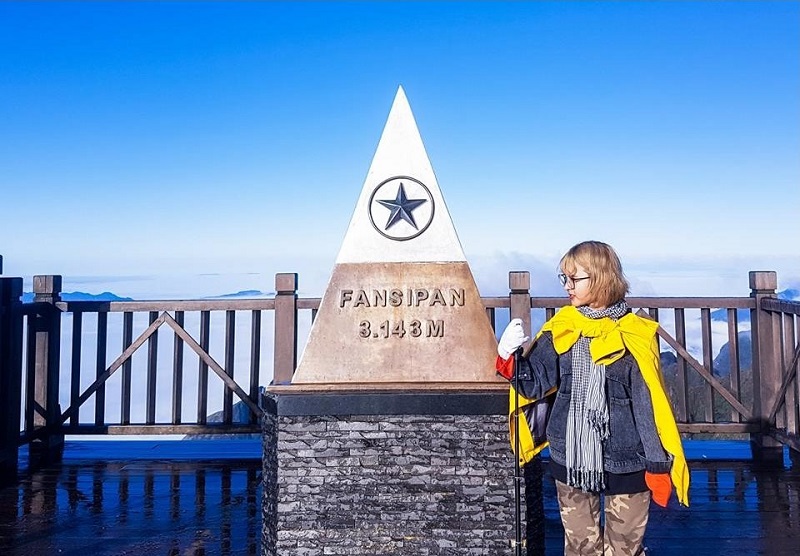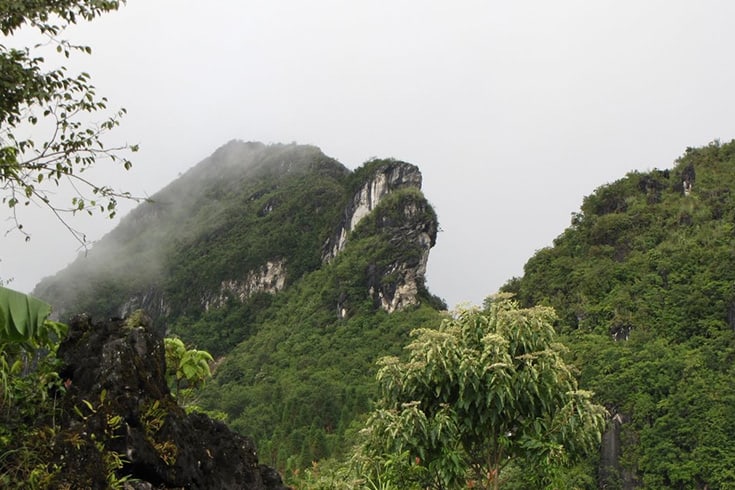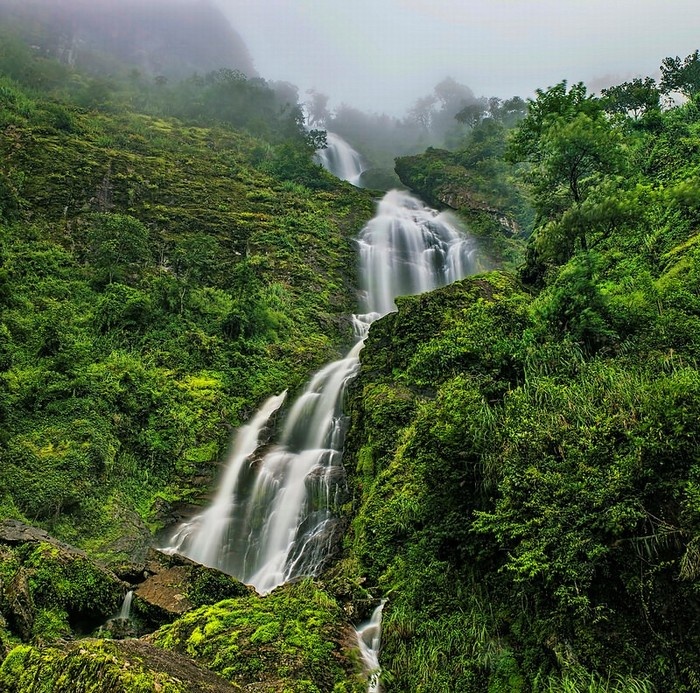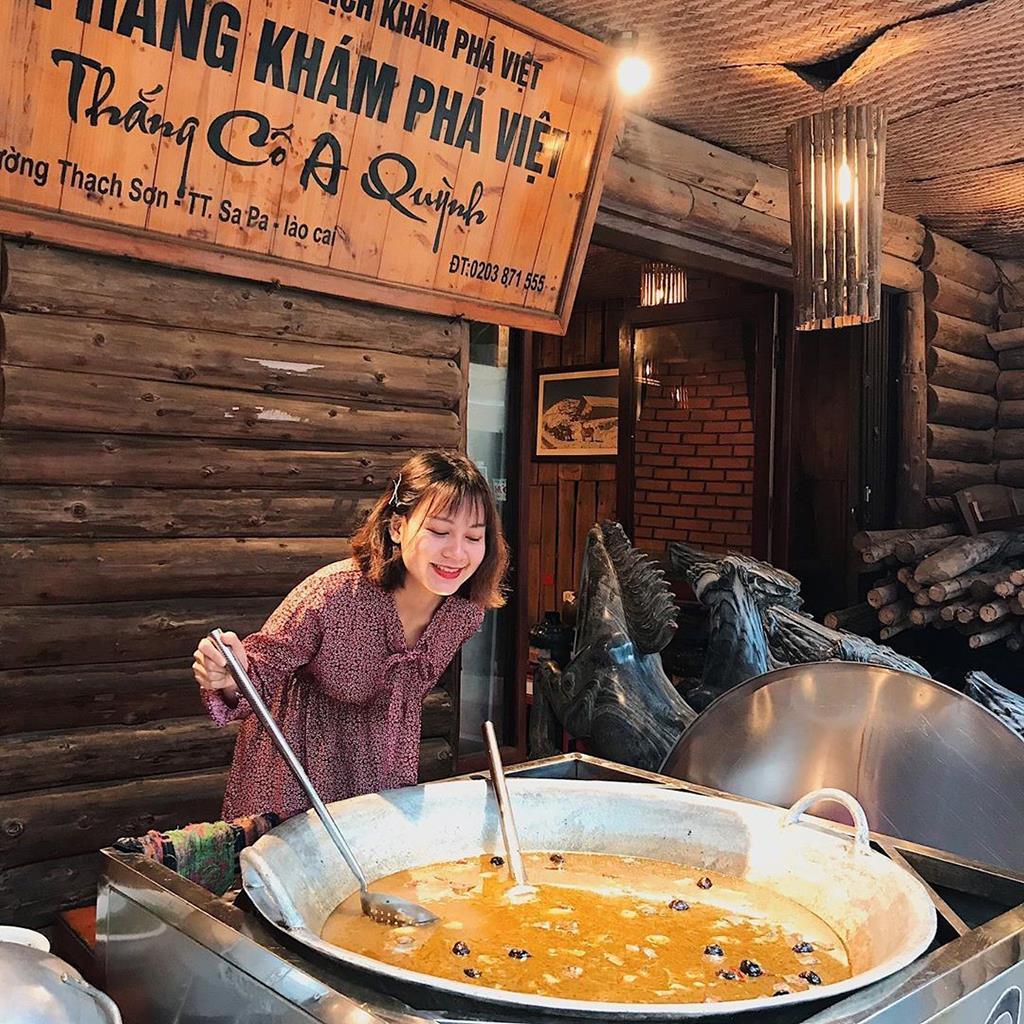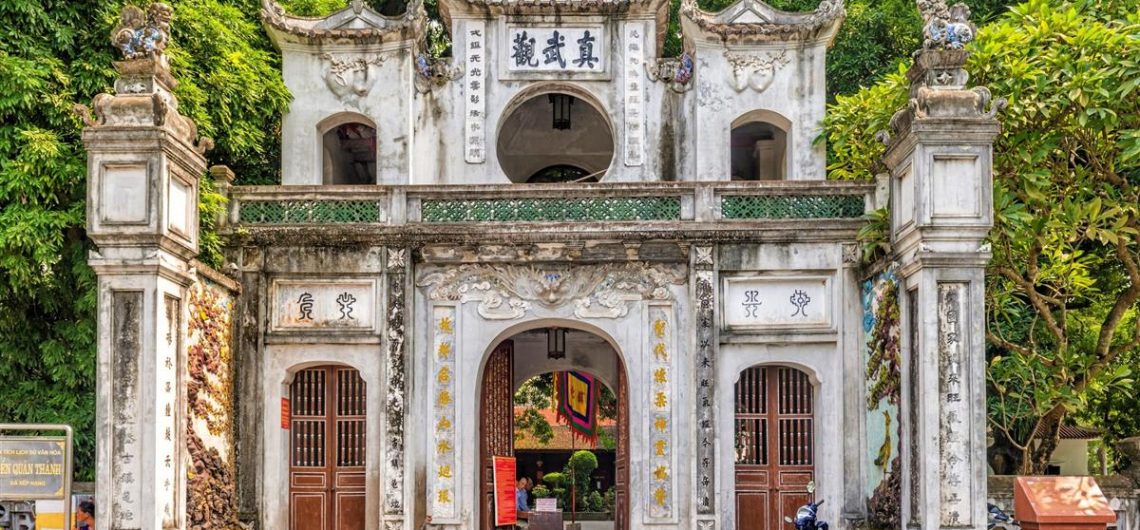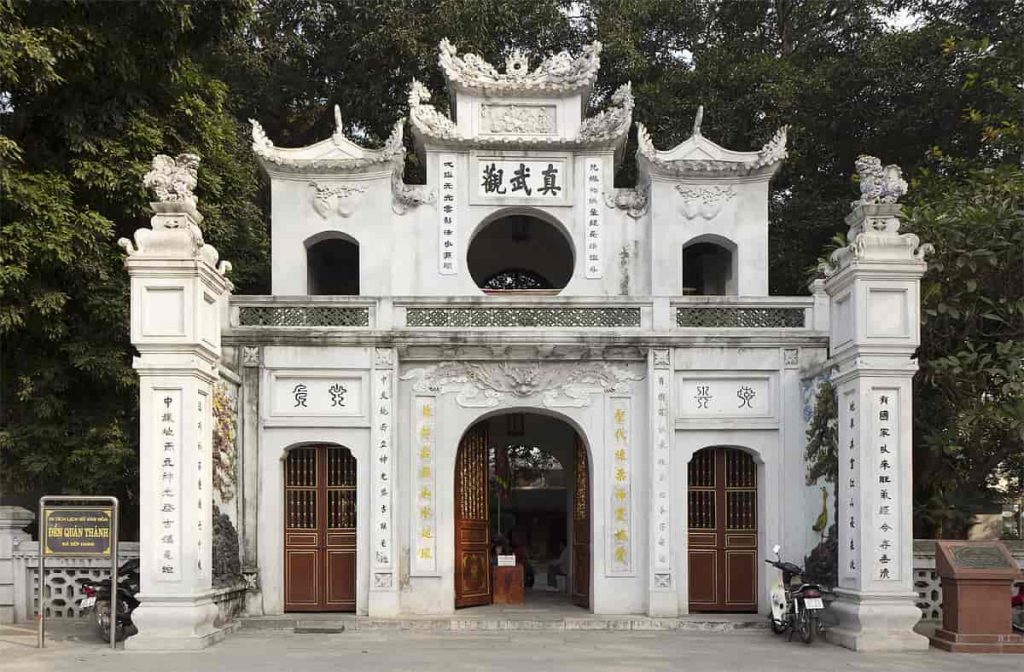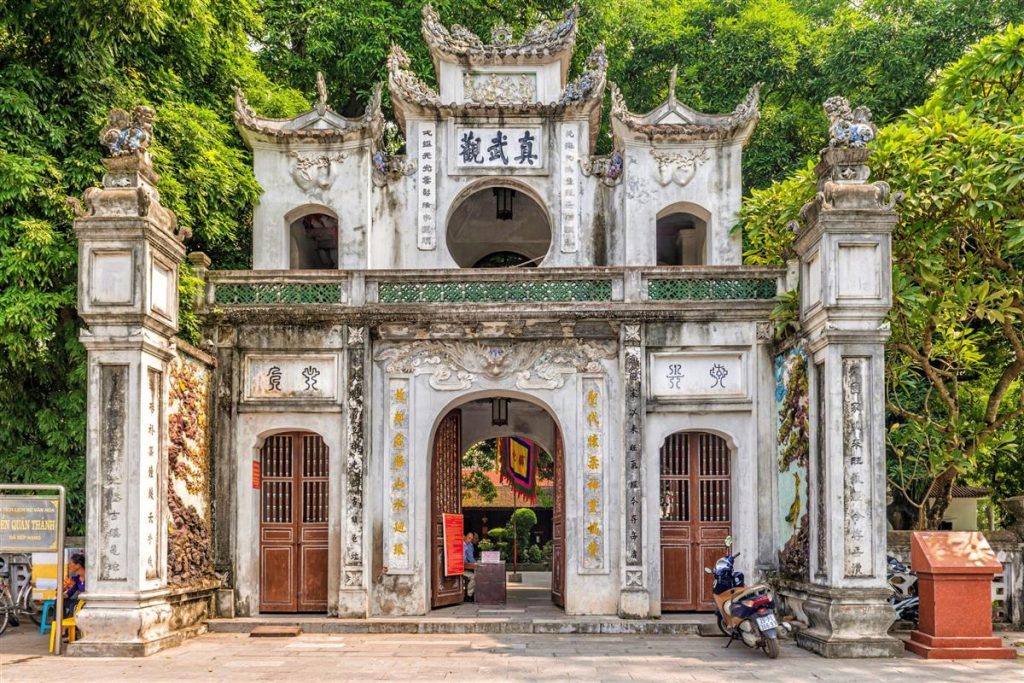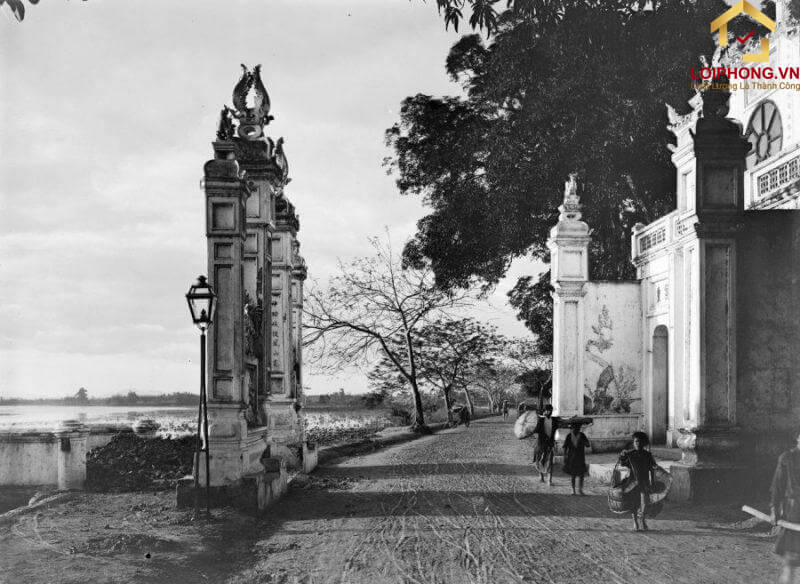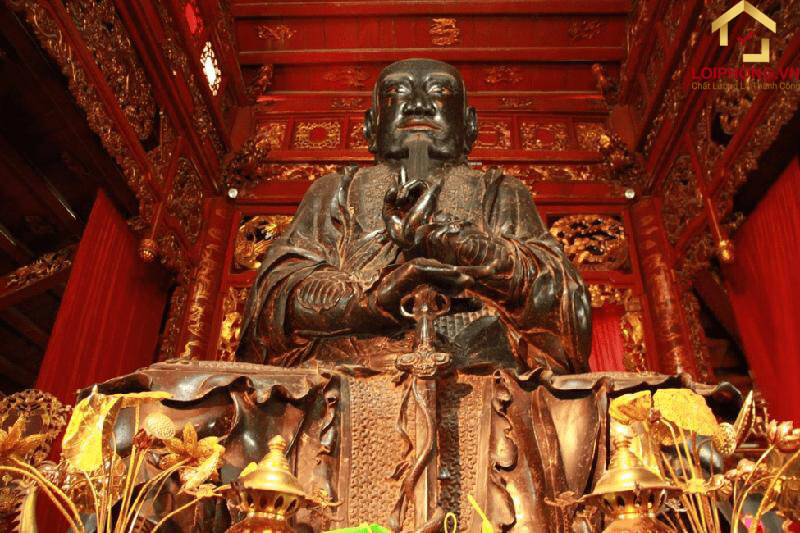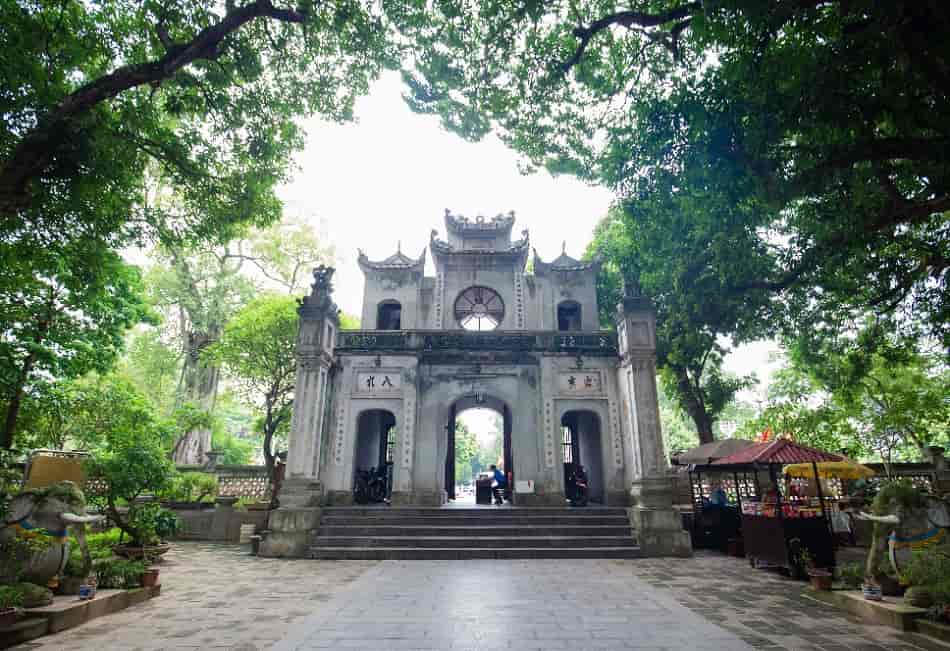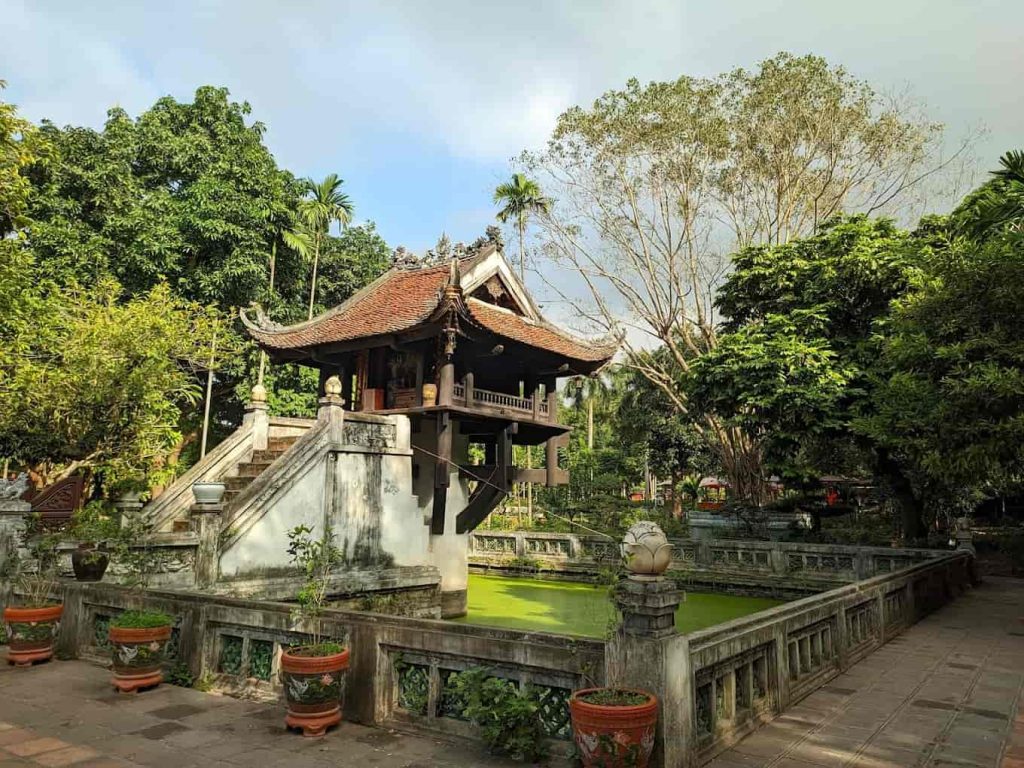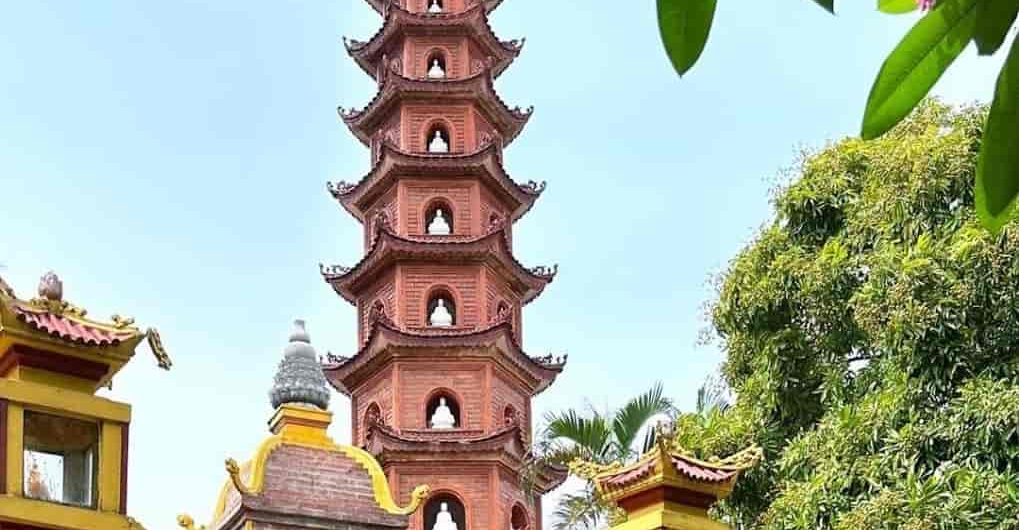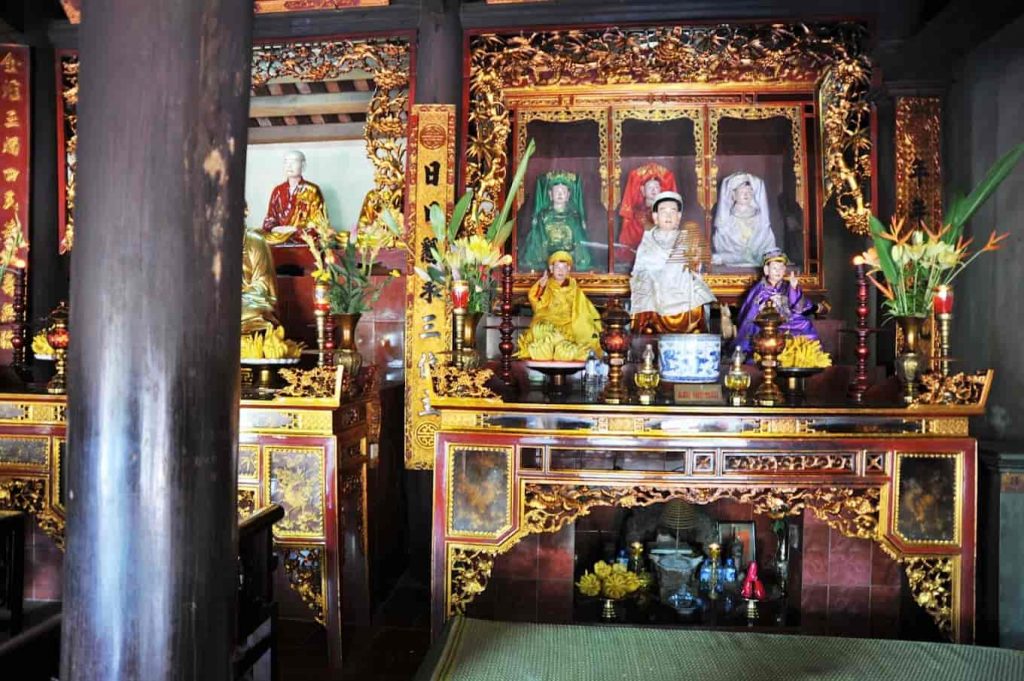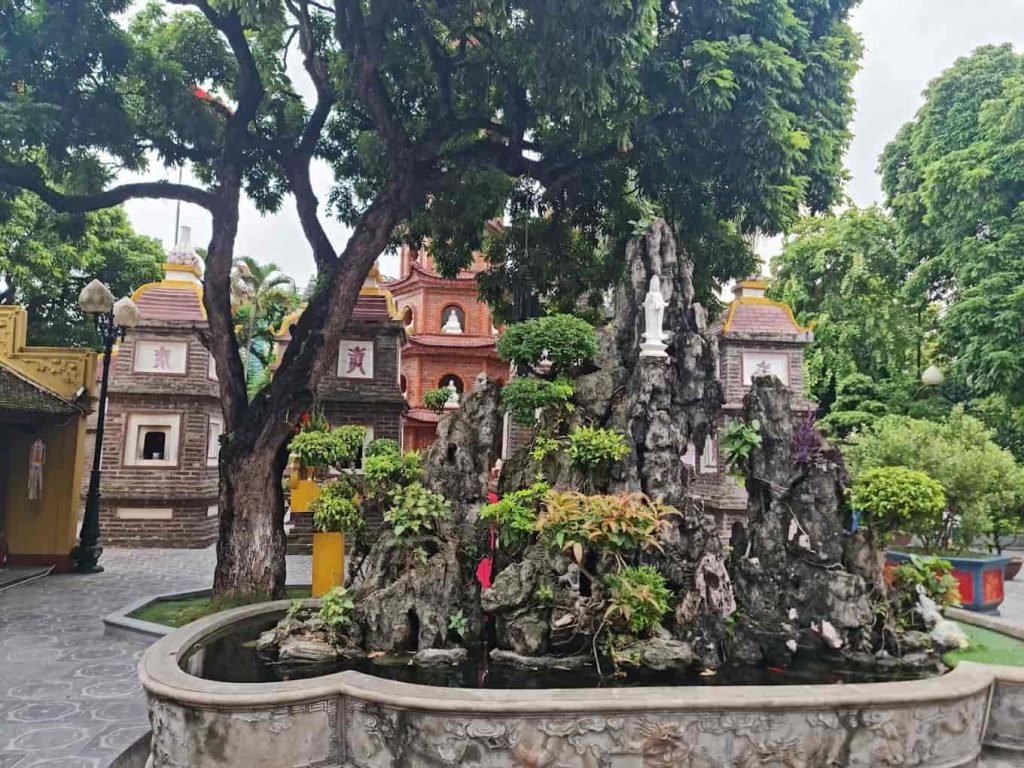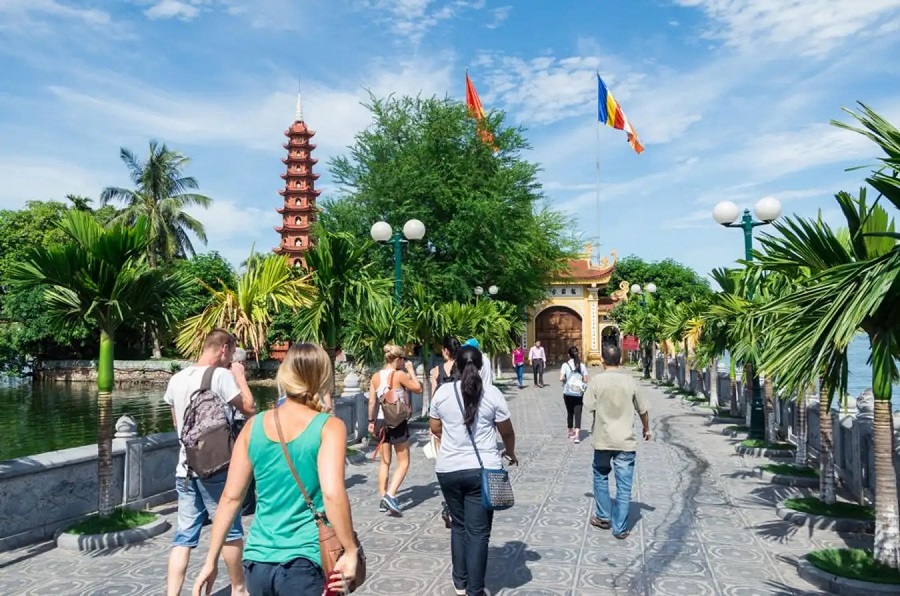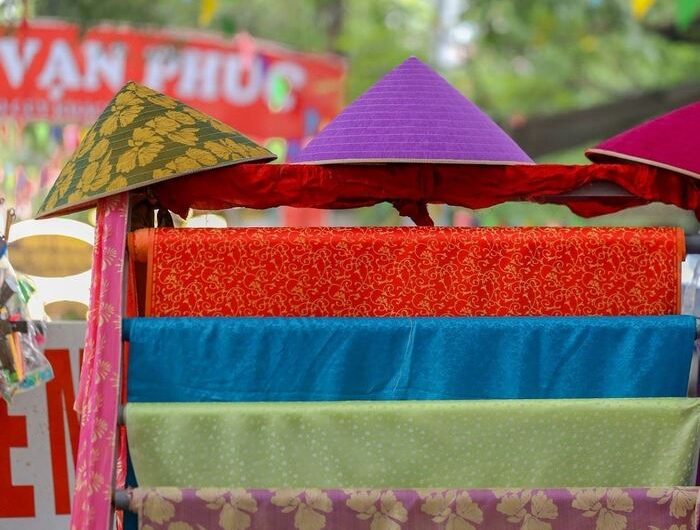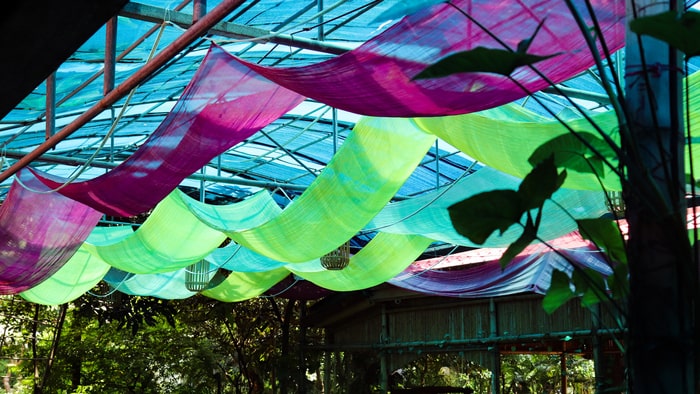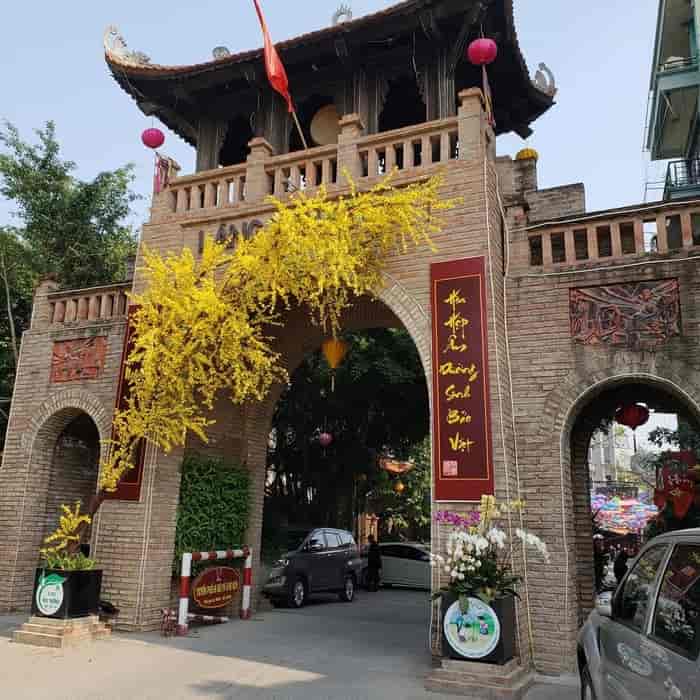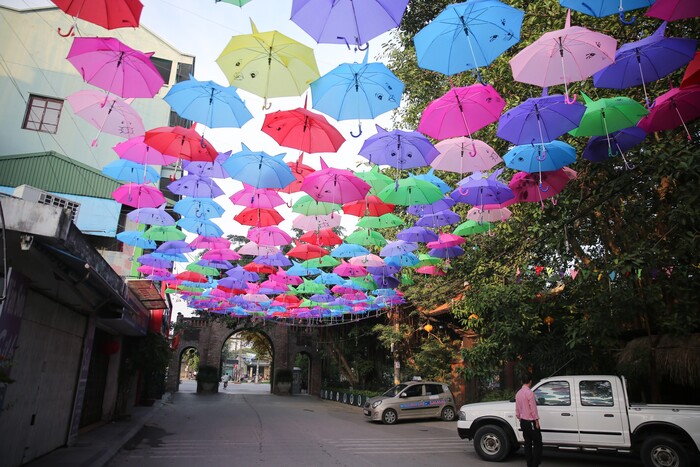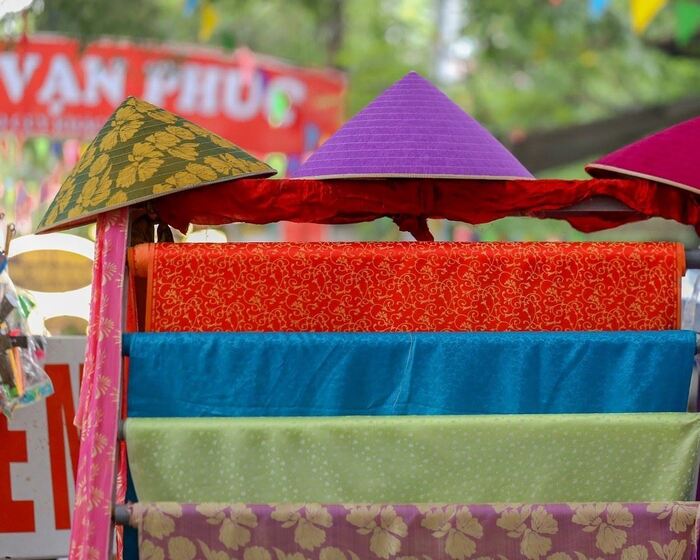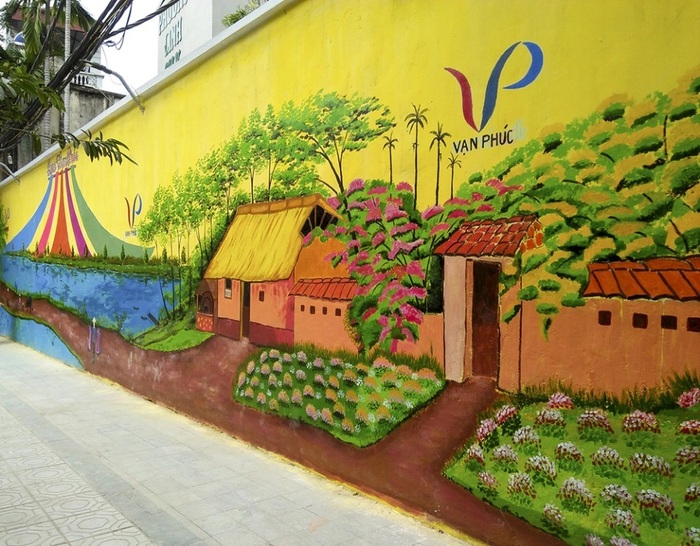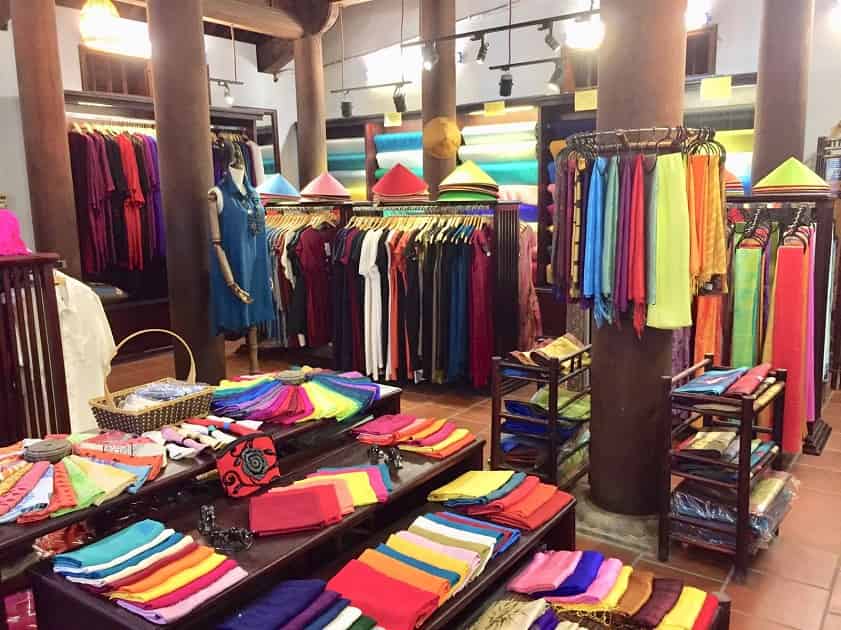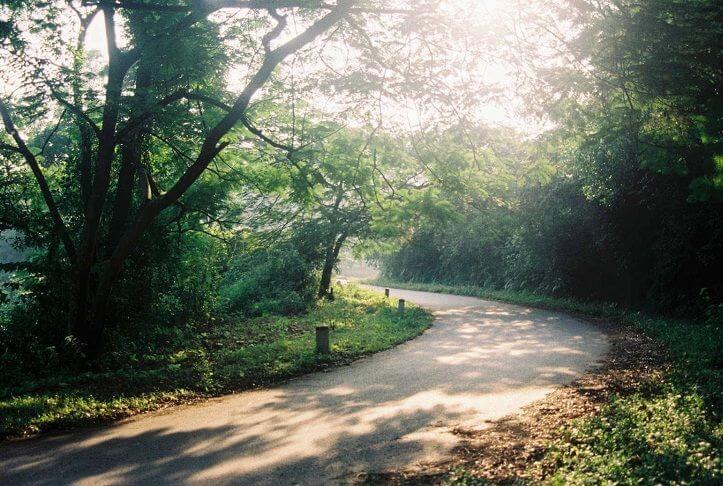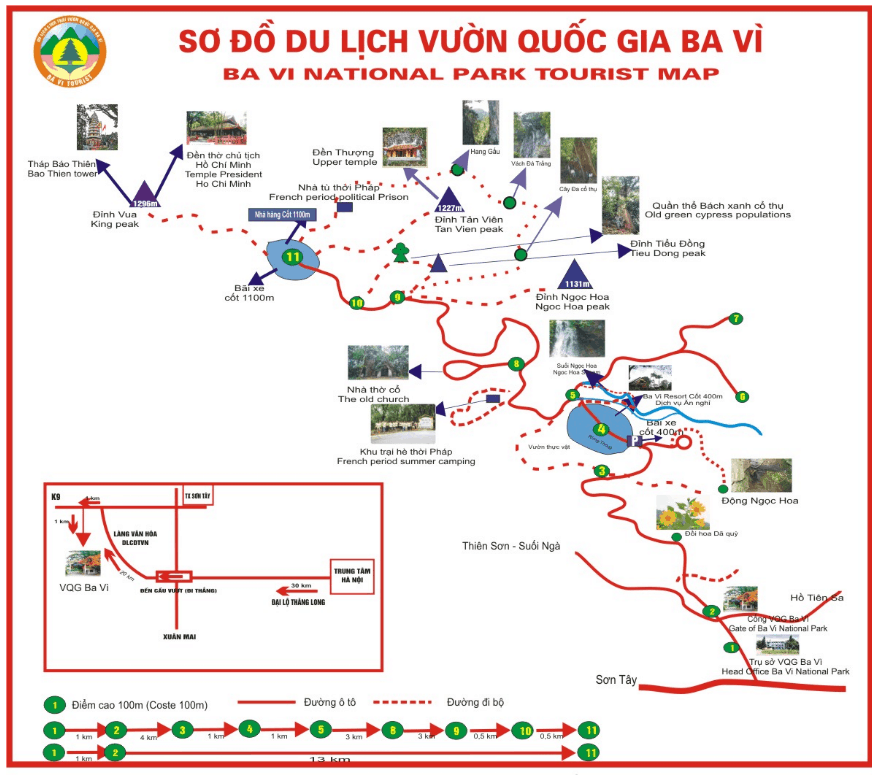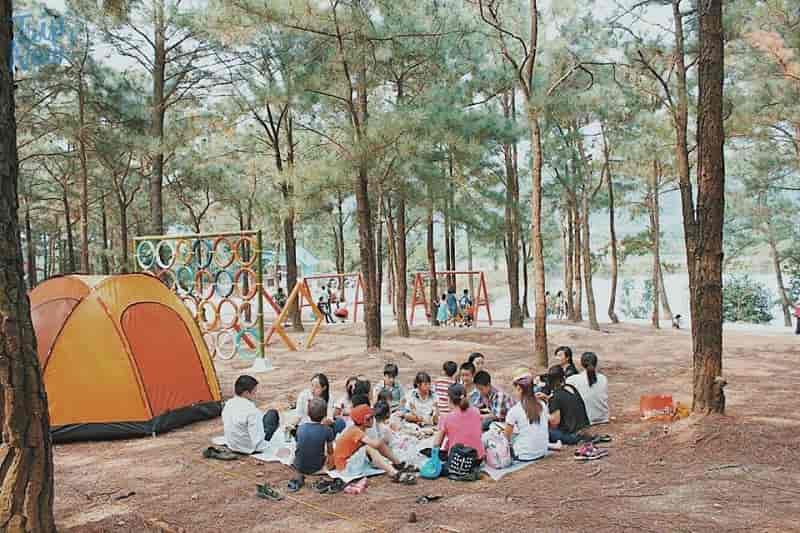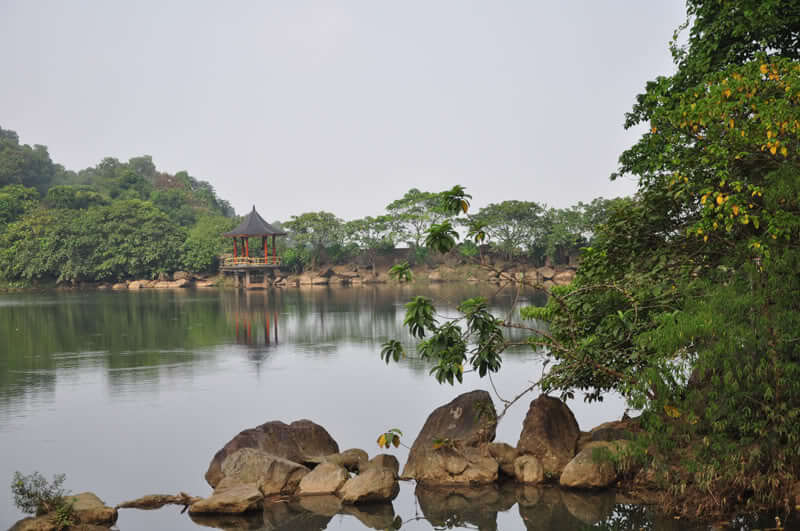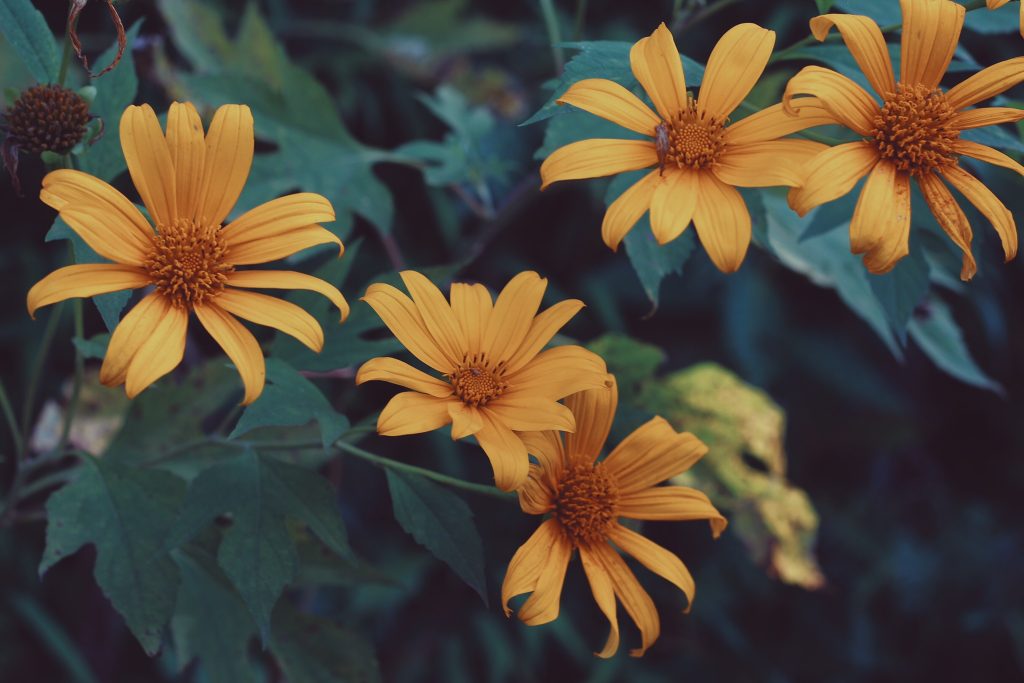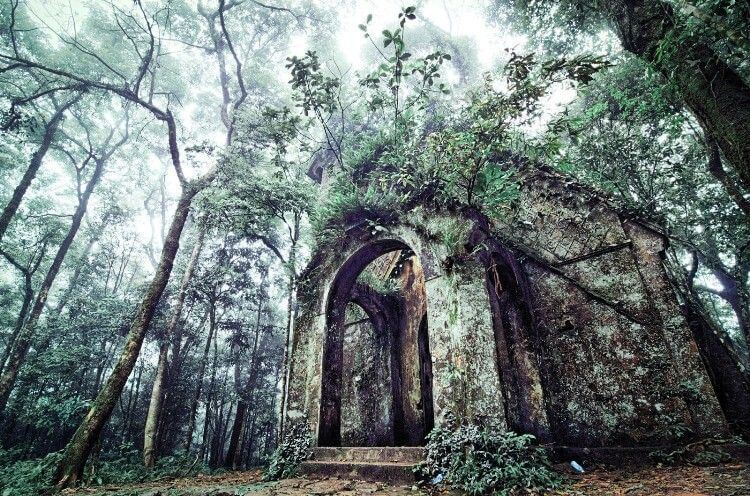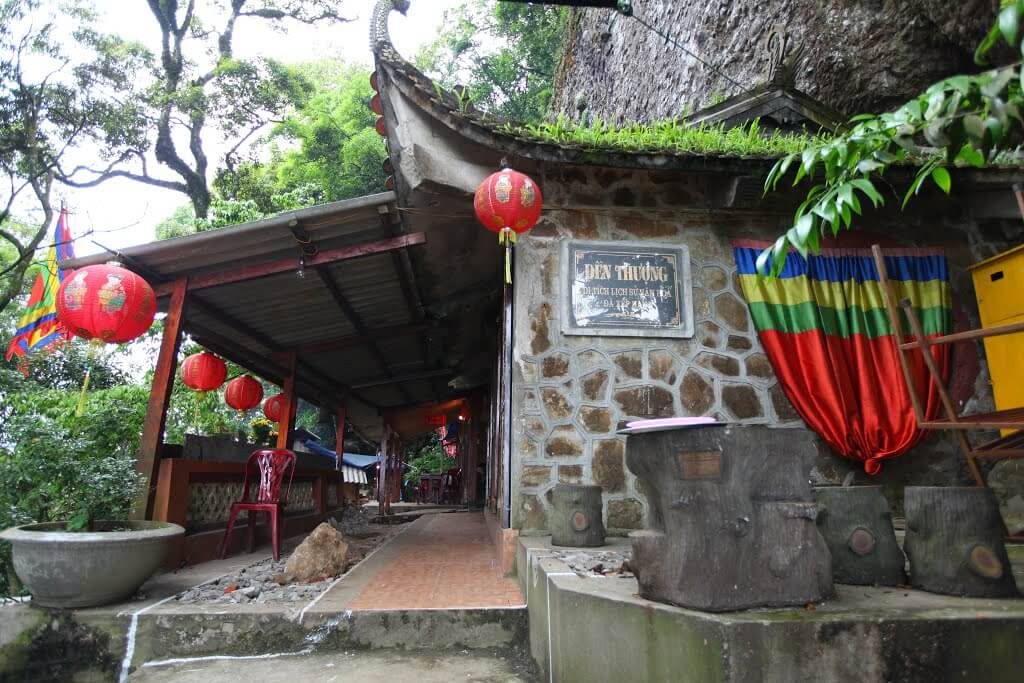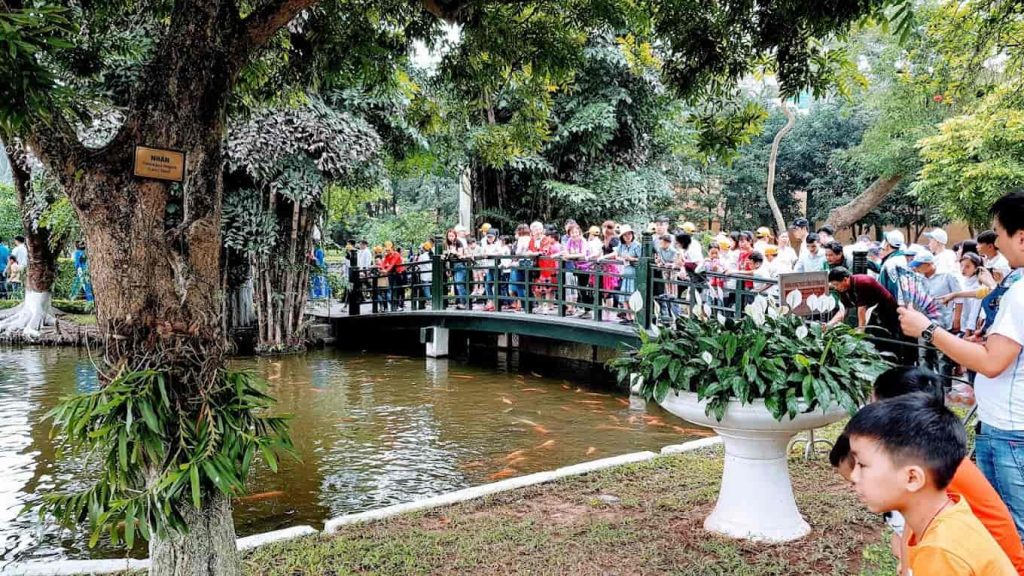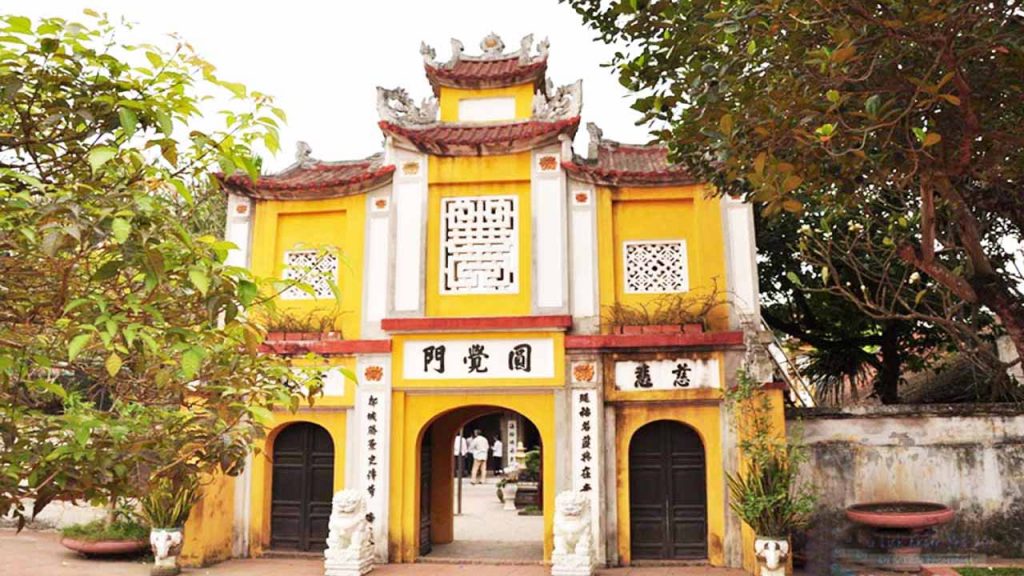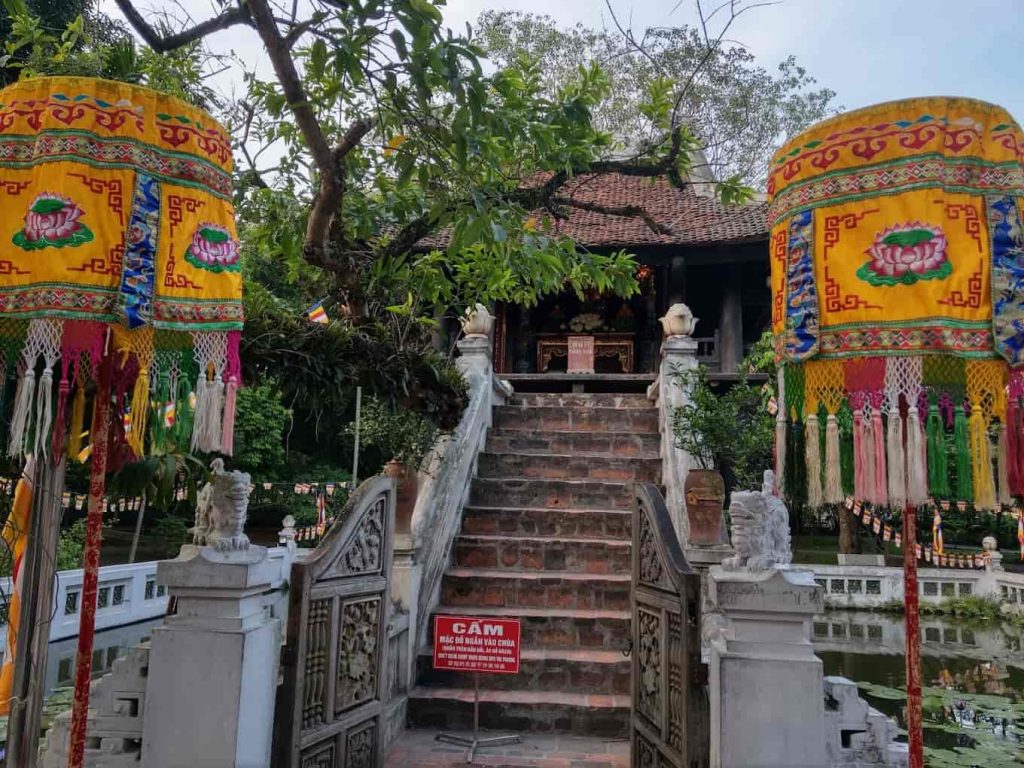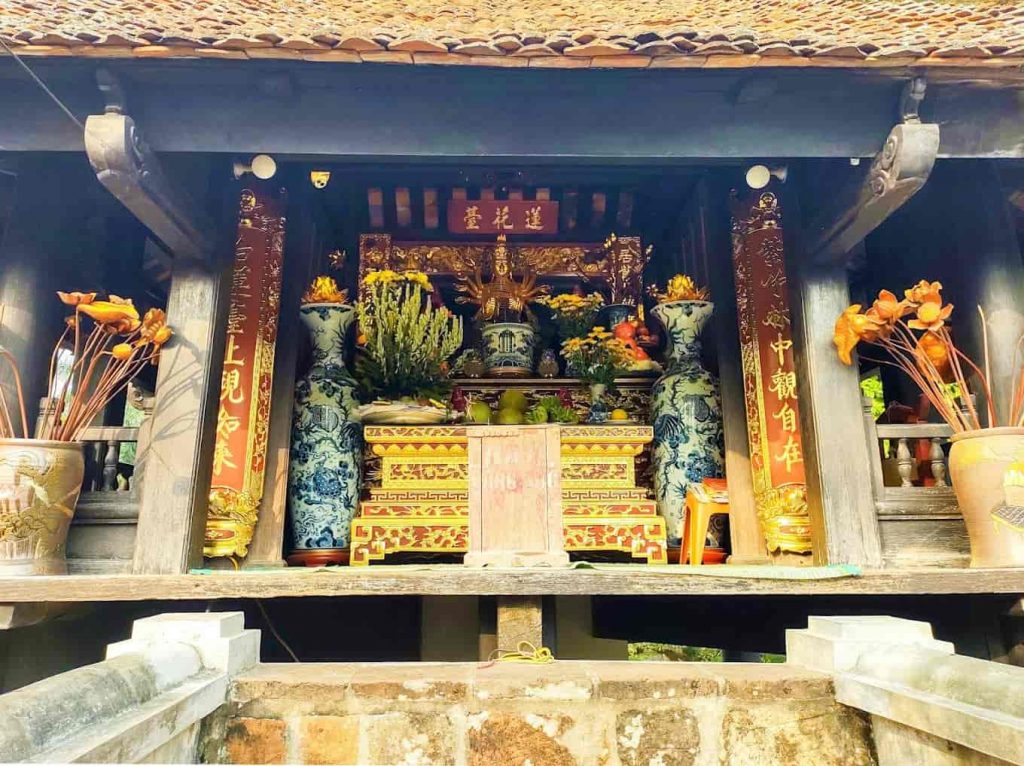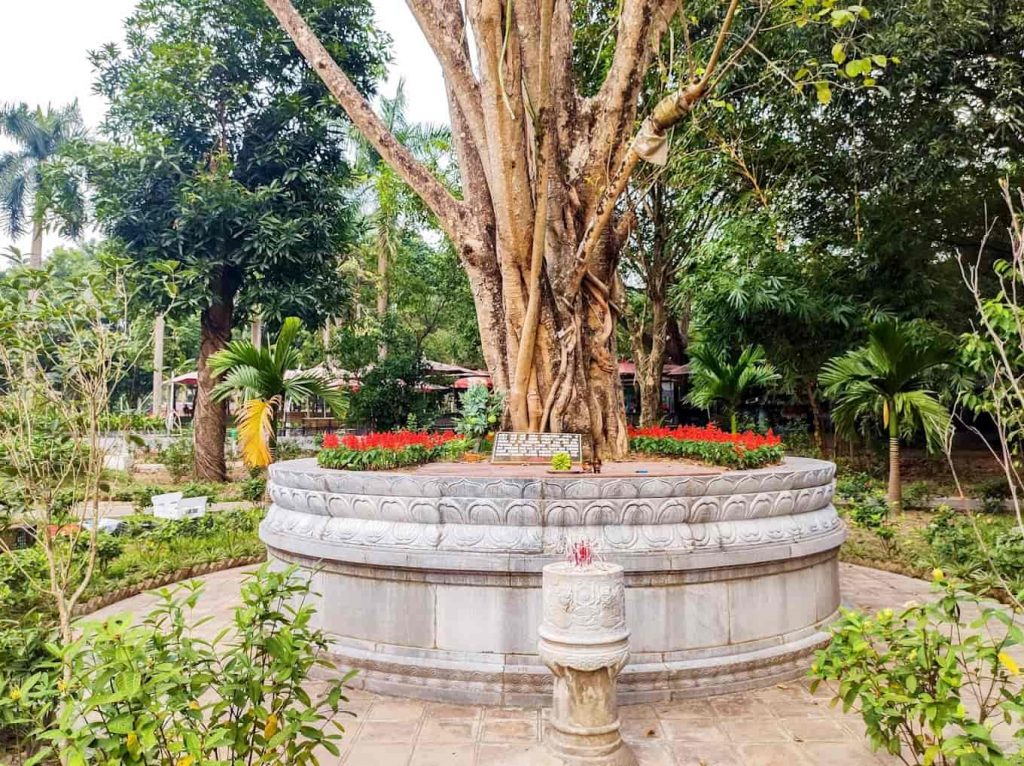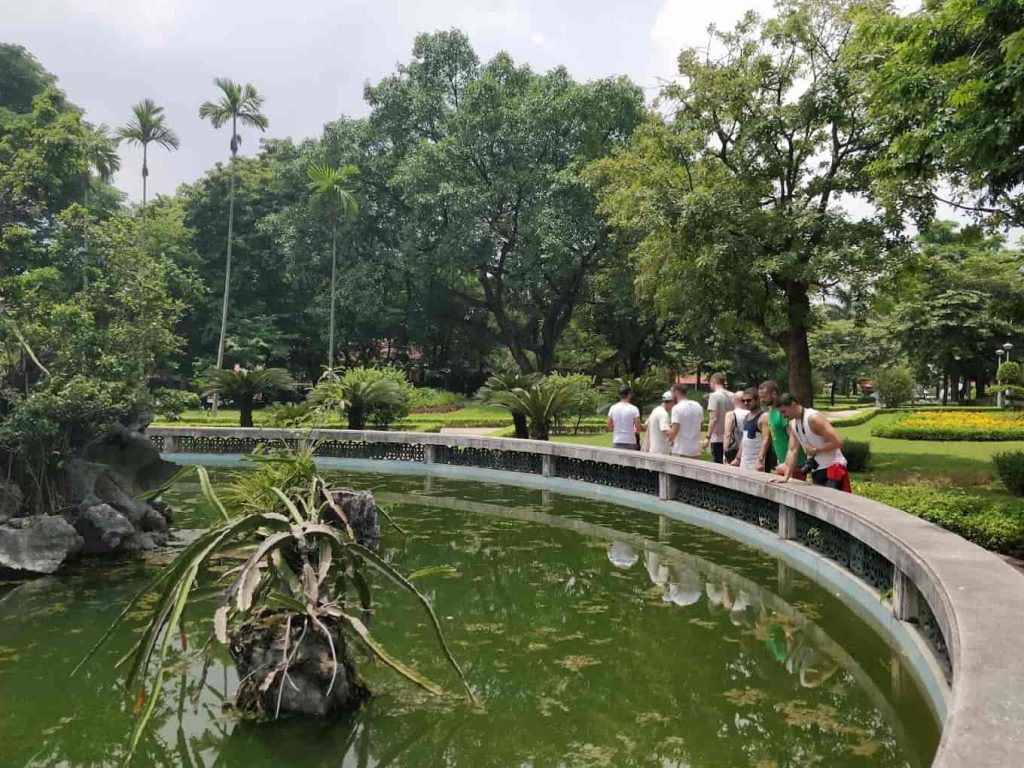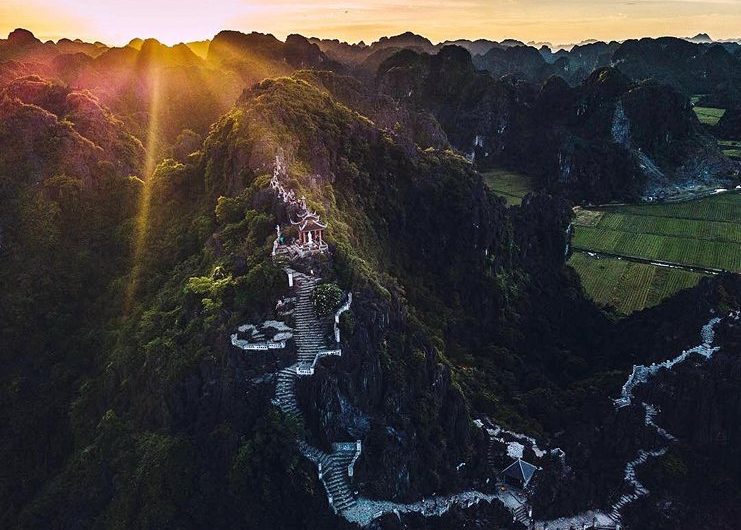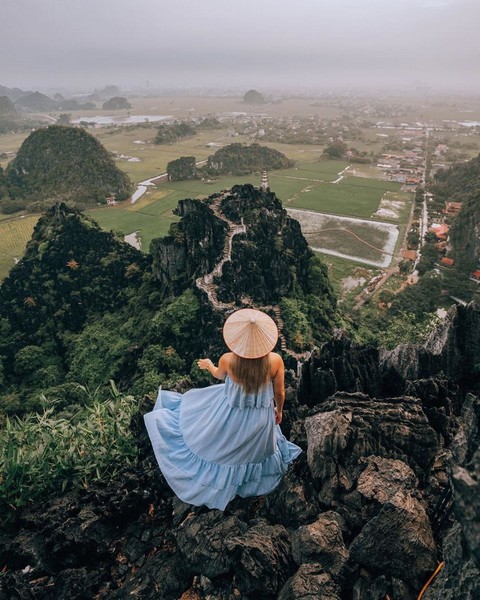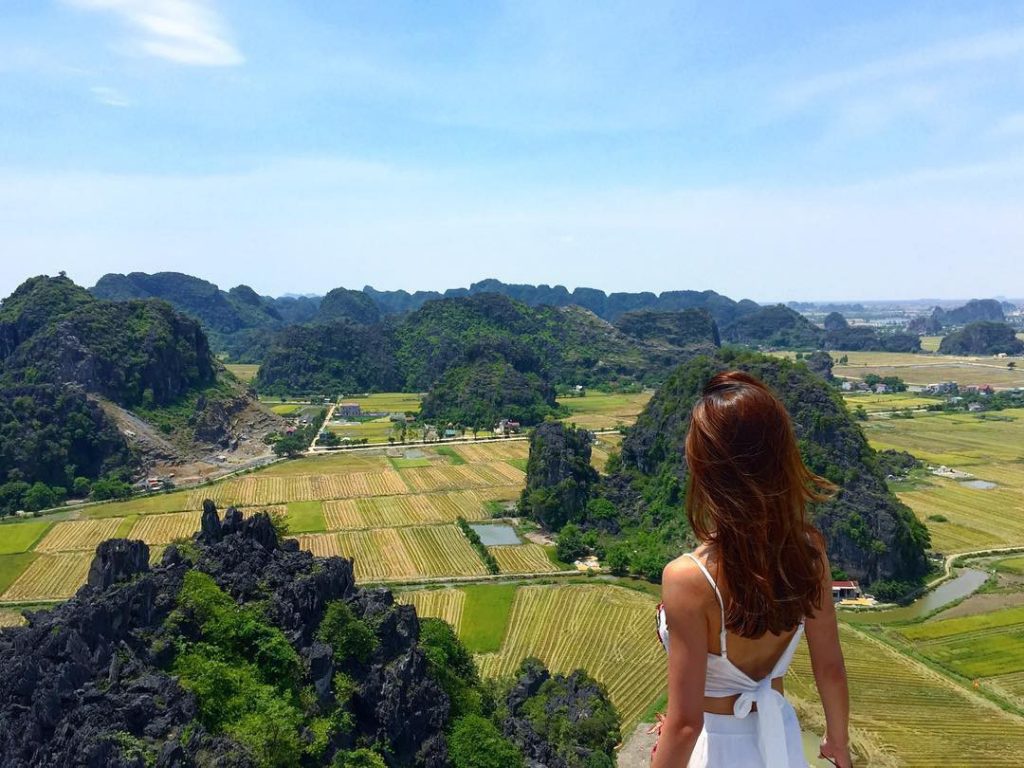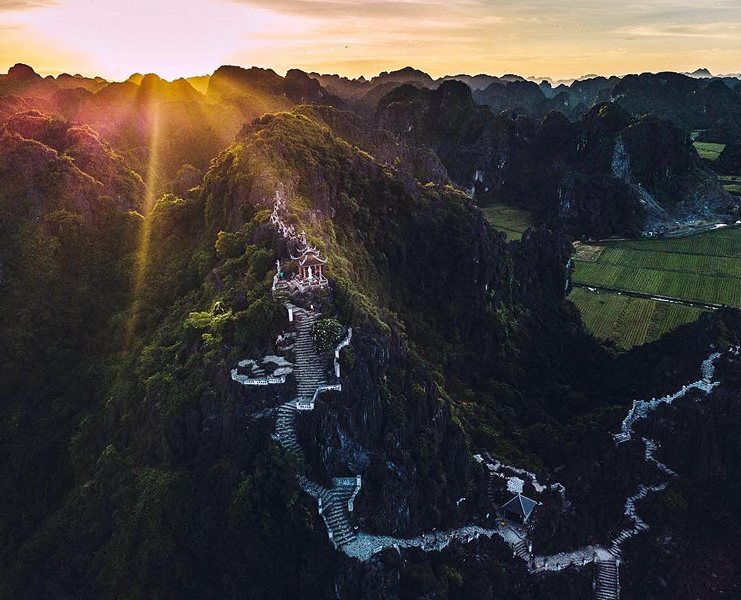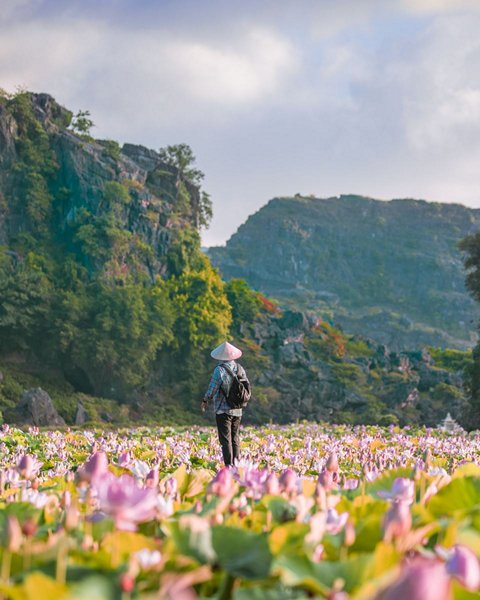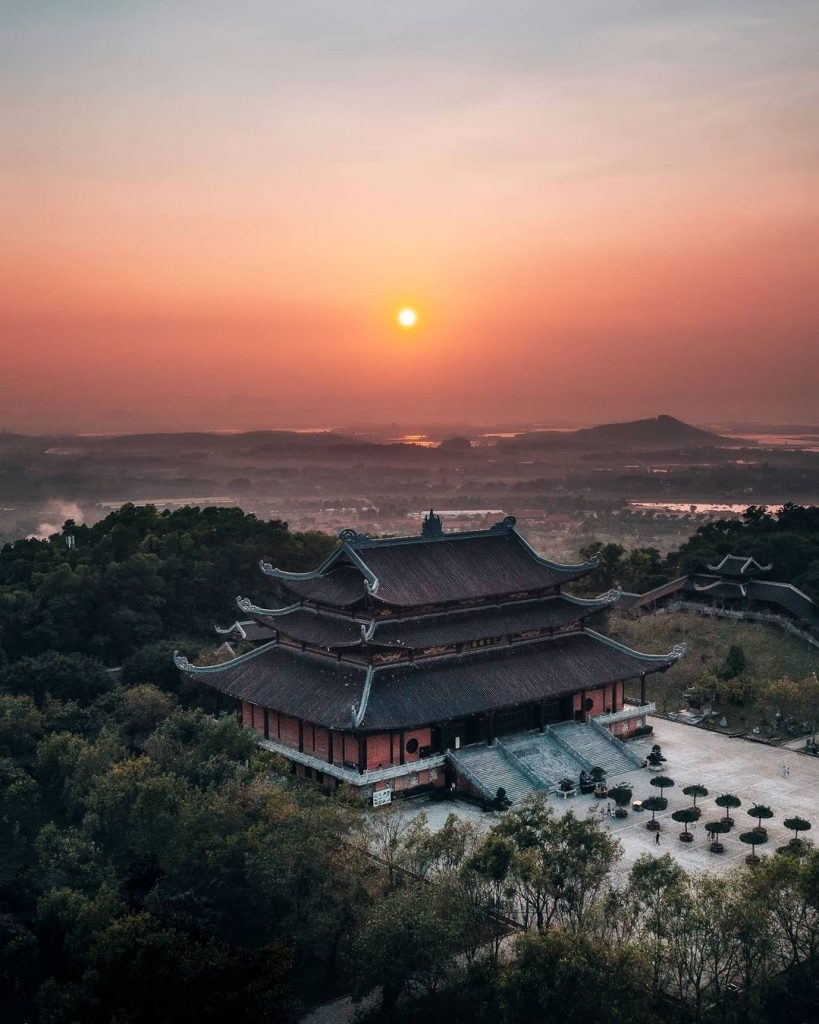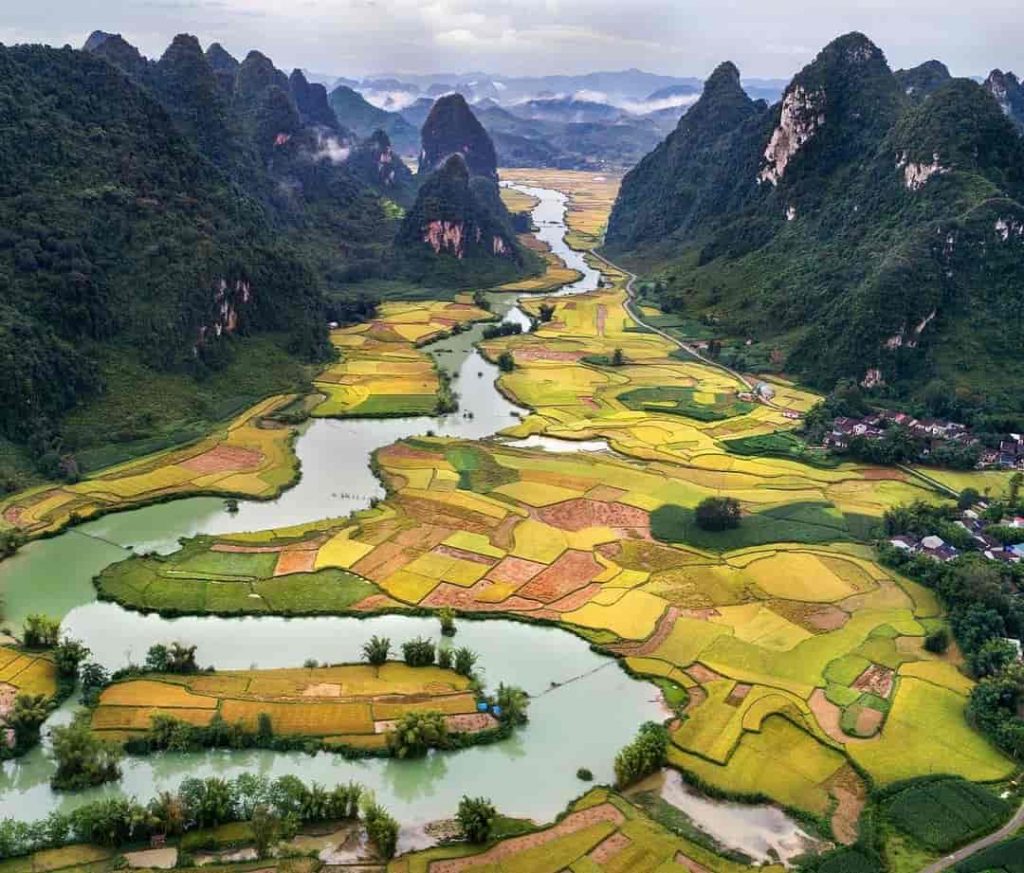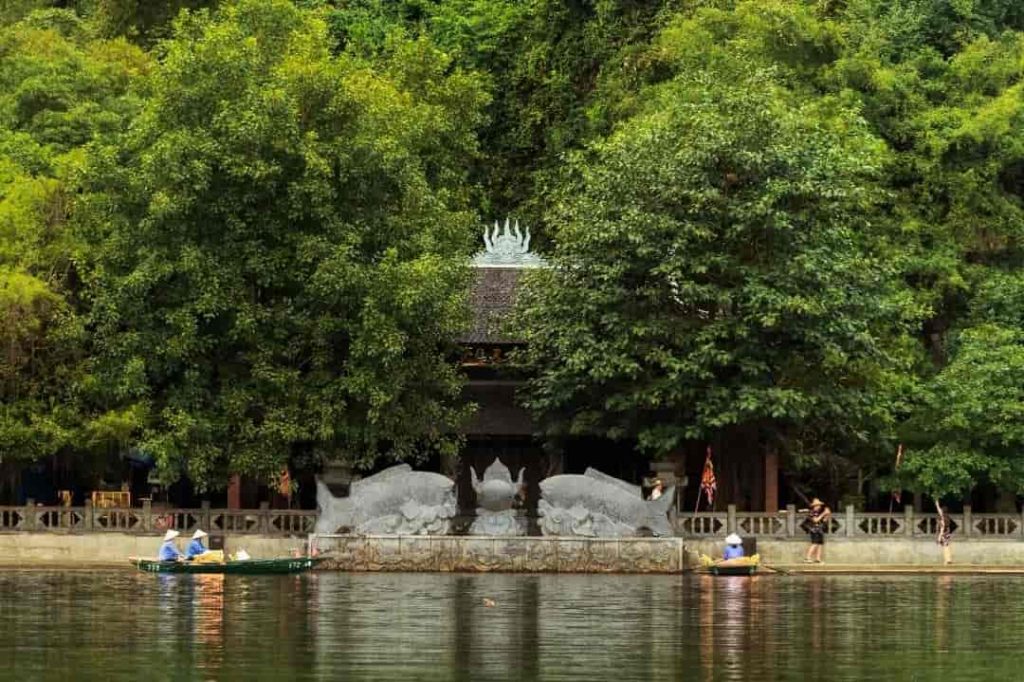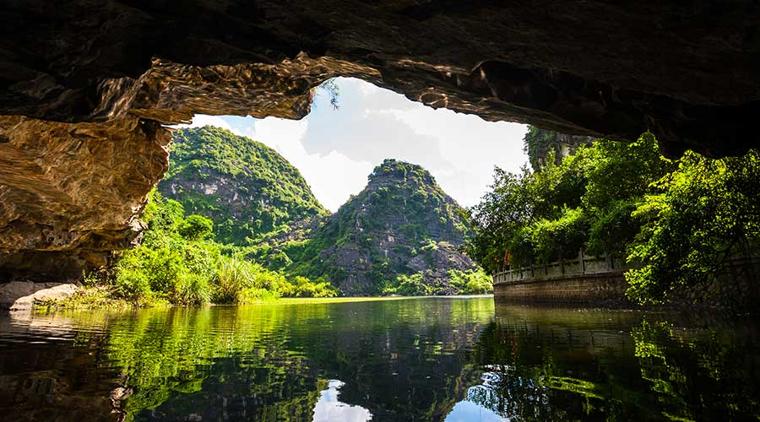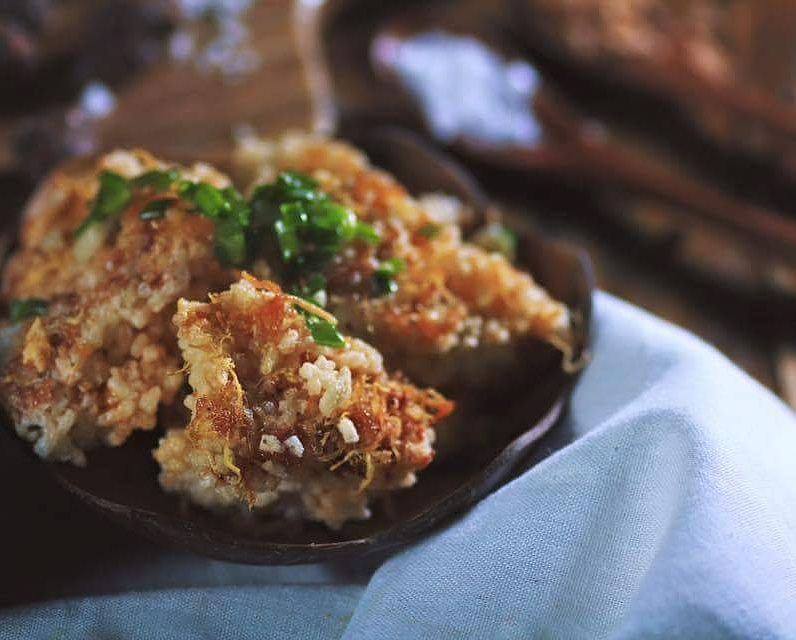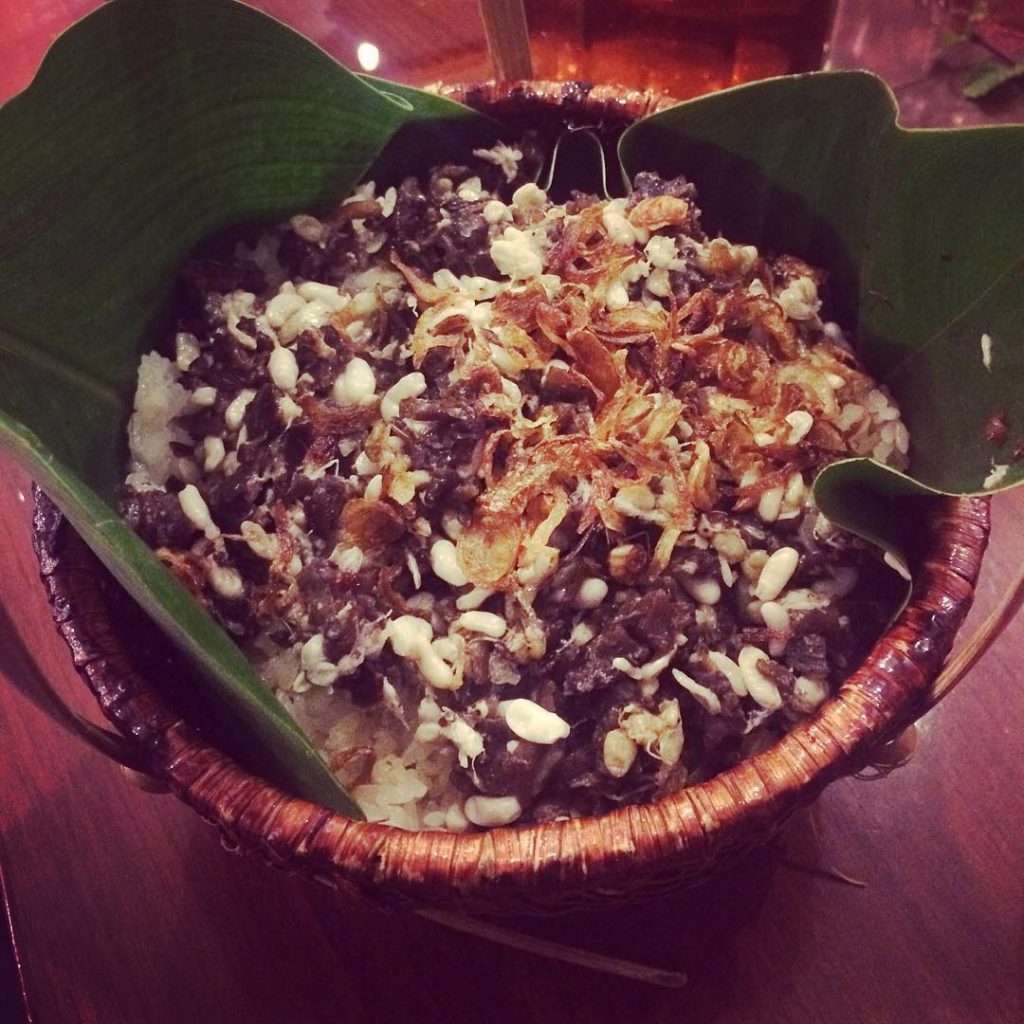Ham Rong Mountain in Sapa is a mountain range located in the Hoang Lien Son Mountains in northern Vietnam, known for its rocky peaks resembling dragons. This is also a popular destination for many tourists visiting Sapa. If you’re wondering what makes Ham Rong Mountain so beautiful or simply need some tips for your hiking trip to Ham Rong Mountain, let’s explore this location often referred to as “Mini Sapa” with DanangPrivateCar.com’s!
A Few Words About Ham Rong Mountain
Many people often wonder where Ham Rong Mountain is located. It may come as a surprise that this beautiful mountain is right behind the Stone Church in Sapa, very close to the town center, making it convenient for travel and exploration. The scenery on Ham Rong Mountain is surrounded by lush, natural beauty, and various flowers in full bloom, which captivate many tourists.
Some travelers may be curious about the name “Ham Rong,” which translates to “Dragon’s Jaw.” When viewed from a distance, the random rock formations on the mountain resemble the shape of a dragon’s jaw reaching up towards the azure sky.
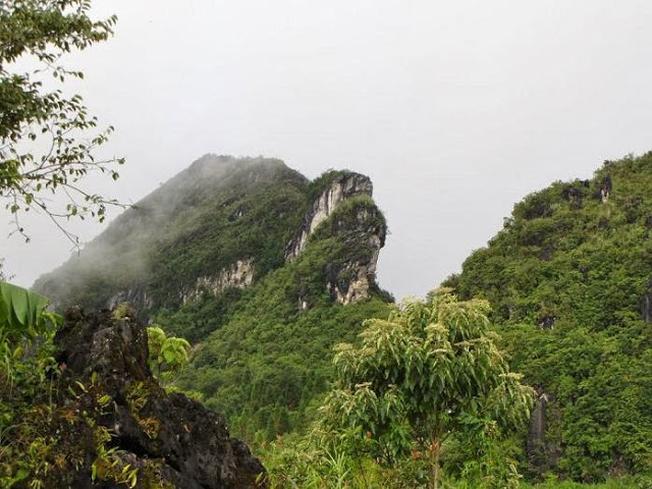
Local legends tell a story of two dragons who descended from the heavens to play in this region but were caught by a sudden deluge. One dragon managed to fly back to the heavens, while the other, engrossed in play, was trapped on Earth and turned into stone. This stone figure now faces towards its heavenly companion, forming what we now know as the western part of the Hoang Lien Son mountain range, with the head being Ham Rong Mountain, followed by Heaven’s Gate and O Quy Ho Pass.
There are also stories of a time when this area was a fertile land teeming with chaotic creatures living in the muddy soil. Ngoc Hoang, the Jade Emperor, ordered all these creatures to find their own habitats.
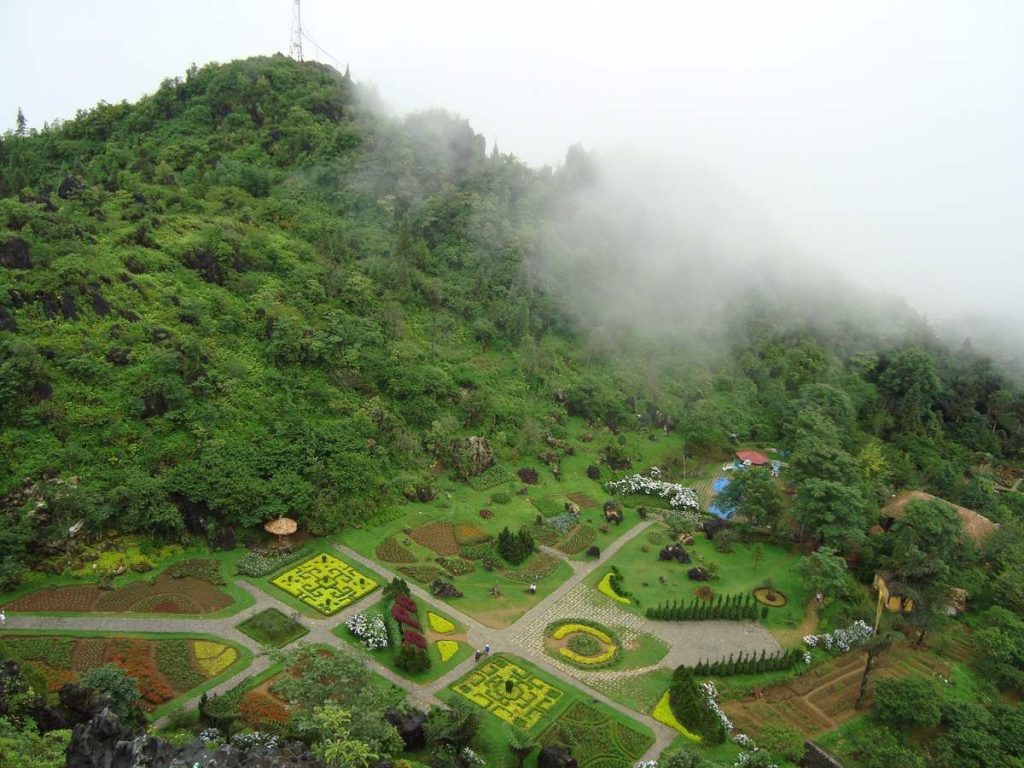
At that time, three dragon siblings from the east quickly moved westward as they found the eastern region had no more space. However, the youngest sibling couldn’t keep up with his brothers and ended up in a pack of fierce beasts. Seeing these ferocious creatures, the youngest sibling quickly transformed and roared with all his might. At that very moment, the allocation of territory ended, and the youngest sibling turned into stone with his head held high and mouth wide open. This is the part we now know as Ham Rong Mountain. The two elder brothers returned to rescue the youngest but were too late, and they too turned into stone, forming the adjacent mountain ranges.
Read more articles introducing Sapa: Introduction to Sapa, Lao Cai – A Famous Tourist Destination in the Northwest.
Ticket Prices for Ham Rong Mountain
Located just behind the Stone Church in Sapa, a short walk from the town center through various drink stalls, snack shops, and souvenir stands, you’ll find the path leading to Ham Rong Mountain in Sapa. From there, you can purchase tickets for entry and explore the area at your own pace.
Ticket prices are as follows:
- 70,000 VND per adult.
- 20,000 VND per child.
- Children under 1.2 meters in height are free of charge.
Easiest Way to Get to Ham Rong Mountain in Sapa
To reach Ham Rong Mountain, you can take a short walk from the Stone Church, which is located near the center of Sapa town.
If you prefer to rent a motorbike for more flexibility in transportation, you can park your motorbike at the entrance of the tourist area. There are parking attendants, typically run by local vendors, and you can negotiate the parking fee based on the duration of your visit.
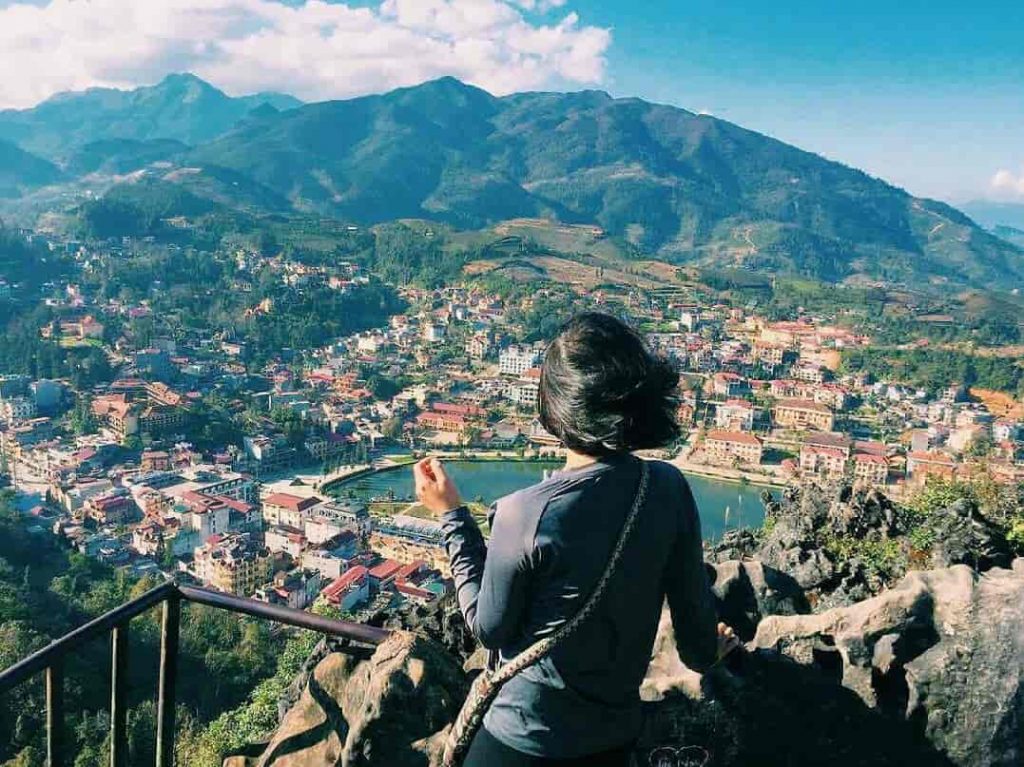
In case you are not familiar with the area or prefer not to drive yourself, you can choose to take a taxi or a motorbike taxi (xe ôm) from your hotel in Sapa. Local drivers are familiar with the route, and since Ham Rong Mountain is a well-known tourist destination, they should have no trouble taking you there.
If you are currently in Hanoi and looking for a convenient way to reach Ham Rong Mountain in Sapa, consider using a private car rental service with a driver in Hanoi. DanangPrivateCar.com’s offers private car rental services with a professional driver who can assist you with a safe and comfortable journey. Book a private trip from Hanoi to Sapa today.
What to Prepare for Hiking Ham Rong Mountain?
The path to Ham Rong Mountain, while not as challenging as Mount Fansipan, is not particularly short. Therefore, you should prepare 1-2 bottles of purified water to stay hydrated during your ascent. Along the way to the mountain, you’ll find a few refreshment stalls, but prices may be higher.
It’s a good idea to bring some snacks to fuel your body and keep your energy up while hiking because there aren’t many eateries along the way for you to stop at.
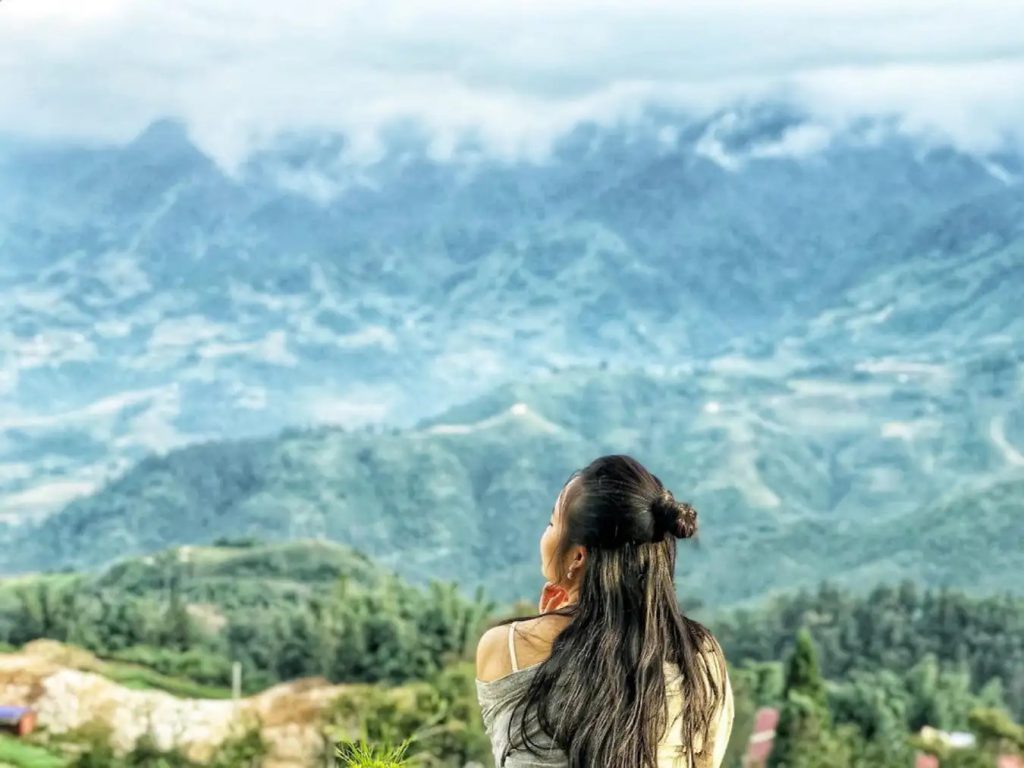
Since you’ll be hiking, make sure to wear proper footwear like hiking boots or simply comfortable athletic shoes. Avoid high heels or sandals, as they can be uncomfortable for your feet.
Additionally, prepare comfortable clothing that also provides warmth because as you ascend, the temperature will drop. You’ll feel colder when you reach the mountain’s peak.
You should also ensure you’re in good health before embarking on this Ham Rong Mountain adventure.
Best Time to Visit Ham Rong Mountain in Sapa
Ham Rong Mountain is beautiful throughout the year, but perhaps the most stunning time to visit is during the early months of the year when flowers are in full bloom, welcoming the new year as if Ham Rong Mountain is waving to invite travelers. From here, you can take in the entire town and enjoy the sight of the blossoms.
During the summer, visiting Ham Rong Mountain allows you to breathe in the fresh air of the Sapa region, or simply bask in the early morning sunlight, enjoying the warmth of the sun at the mountain’s peak.
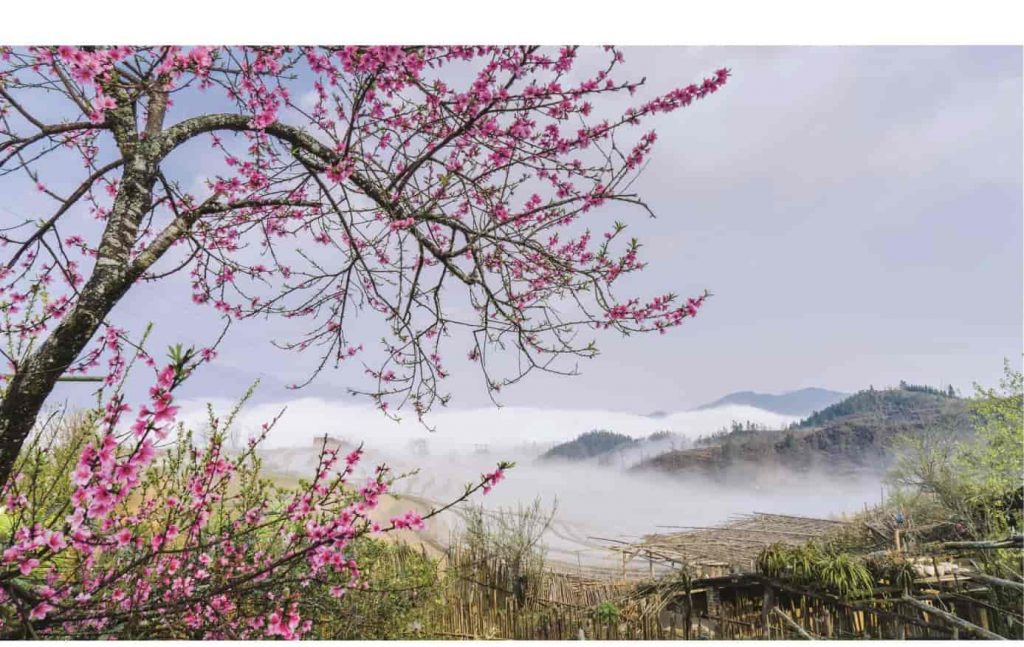
Between August and November each year, Sapa experiences frequent unpredictable rains, which can make the paths slippery and unsafe. If you plan to visit during this time, it’s important to monitor the weather and exercise caution.
In the winter, if you hike Ham Rong Mountain, be sure to pack warm clothing. During this season, the mountain creates a mystical atmosphere, with the entire town of Sapa often shrouded in thick fog, creating a dreamlike scene.
Explore the Beauty of Ham Rong Mountain in Sapa
Ham Rong Mountain covers a relatively large area, ensuring that you’ll have plenty of photo opportunities when checking in. Located at an altitude of nearly 2000 meters, this mountain boasts numerous landscapes, stunning flower gardens, and a harmonious blend of natural and artificial beauty, creating a highly attractive space.
The development of the Ham Rong Mountain area began in the late 1990s with the aim of showcasing the pristine natural beauty and mountainous culture. As you ascend, the scenery becomes increasingly beautiful and unique, adding excitement to your journey. To reach the mountain’s summit, you’ll need to climb stone steps, which are quite primitive.
Ham Rong Mountain is divided into various zones. Today, let’s explore the beauty of some of these scenic areas within Ham Rong Mountain:
Central Flower Garden
This area features many precious flower species creatively arranged by talented artisans to form the word “Sapa.” It’s a unique and elegant display, emphasizing Ham Rong Mountain’s identity as being in Sapa, not in other places like Thanh Hoa or Tam Dao. Many tourists visit this spot for photos, and you can climb higher steps to capture the entire garden.
Ham Rong Mountain mainly hosts cold-weather flowers, with the vibrant red colors of azaleas and blooming orchids attracting visitors. The romantic and serene atmosphere of the flower garden enchants all who visit.
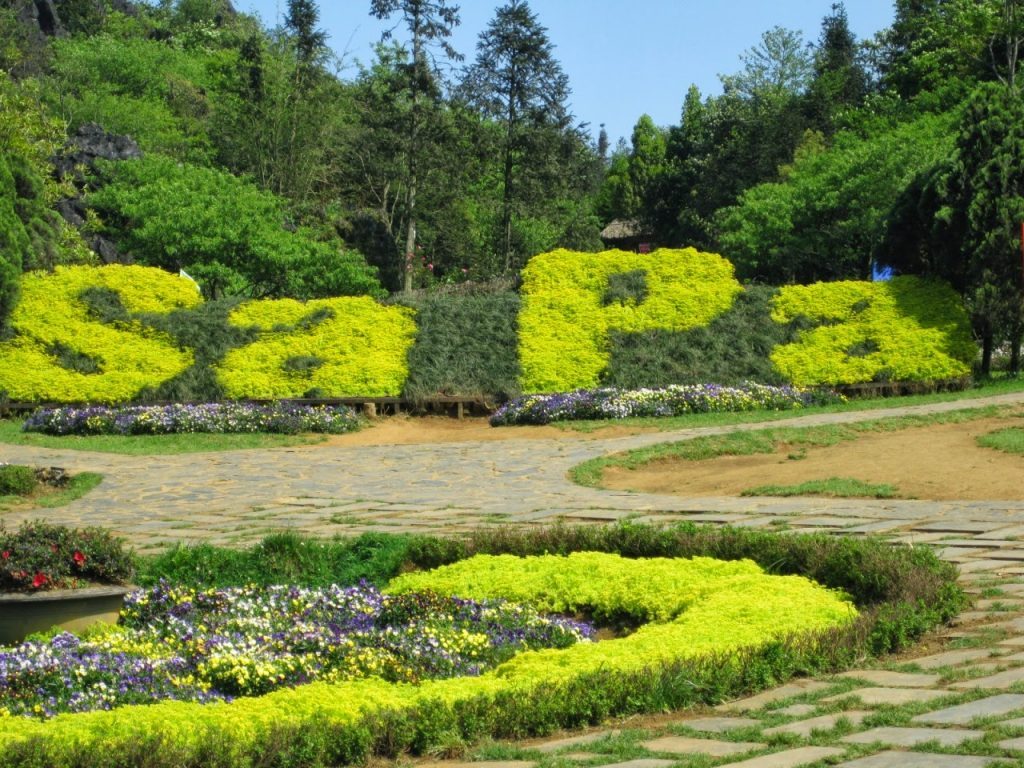
All the flower varieties here are imported from France or Russia, and hundreds of cherry blossom trees have been brought from Japan for experimentation in Vietnam’s Sapa. There are plans to produce imported flower species from European countries here, allowing you to buy these flower varieties for your home garden.
In November, the central flower garden at Ham Rong Mountain blooms with chrysanthemums, allowing you to take photos in the midst of pure white flowers. In April and May, you can enjoy the charm of the blooming rhododendron flowers. You don’t have to travel far to experience the beauty of these flowers; Ham Rong Mountain allows you to immerse yourself in the world of rhododendrons.
Orchid Garden
This area hosts various orchid species, with approximately 200 different types of orchids due to the cold climate and fresh air, making it an ideal environment for orchid growth. You can freely take photos with your favorite orchids.
Orchids are precious and exquisite flowers, and while they exude an aura of grace and beauty, they are also known for their somewhat finicky nature. Every spring, there are places where orchids are sold for Tet, and one of the most concentrated locations is the orchid garden at Ham Rong Mountain. Here, you can immerse yourself in the world of hundreds of beautiful orchids in full bloom.
Zodiac Statues
Passing through the orchid garden, you’ll reach the area with statues of the 12 zodiac animals. Several types of flowers line the bridge that crosses over the stone statues, and you’ll notice a stone goat on the bridge. The concrete bridge is very sturdy and often chosen as a photo spot by young people. Zodiac animal statues are placed in various locations around the two pathways.

When you visit, take photos with the zodiac animal that corresponds to your birth year to create a memorable souvenir of your journey to Ham Rong Mountain.
Cherry Blossom Garden
If Hanoi is famous for the Nhat Tan cherry blossom garden, Ham Rong Mountain in Sapa also has a Japanese cherry blossom garden that blooms during Tet and the spring season. Additionally, there are wild cherry trees, the indigenous variety, with large and beautiful flowers.

Every spring, the cherry blossom garden at Ham Rong Mountain bustles with families and friends gathering to celebrate Tet. You’ll also see young women wearing graceful ao dai dresses posing for photos amidst the cherry blossoms, creating images of festive and vibrant Tet celebrations.
Stone Garden of Thach Lam
Entering this area, you’ll feel like you’ve stepped into a stone forest in a fairyland. People in the past imagined this place to be like the claws of a dragon. Here, you can enjoy the fresh air of Sapa in its most natural and carefree form, leaving behind all the worries of daily life.

The stone garden features towering rock formations bestowed by nature, with unique and fascinating shapes. They look like the claws of a dragon, sharp and extraordinary. Among the jagged rocks, you’ll find greenery, adding to the mysterious beauty of the scene. As you explore deeper into the garden, you’ll be amazed by the twisting stone formations, making you feel like you’re lost in a labyrinth of rocks, captivated by the stunning beauty of nature.
Cloud Yard (Sky Gate)
The Cloud Yard at Ham Rong Mountain is a hotspot for cloud enthusiasts. When you’re here, you’ll feel as if the clouds are swirling beneath your feet, creating a sense of floating on clouds. From the Cloud Yard, you can look down and see the town of Sapa, the Muong Hoa Valley, Cat Cat Village, or the terraced rice fields during the harvest season. You can fully appreciate the breathtaking beauty of Ham Rong Mountain.
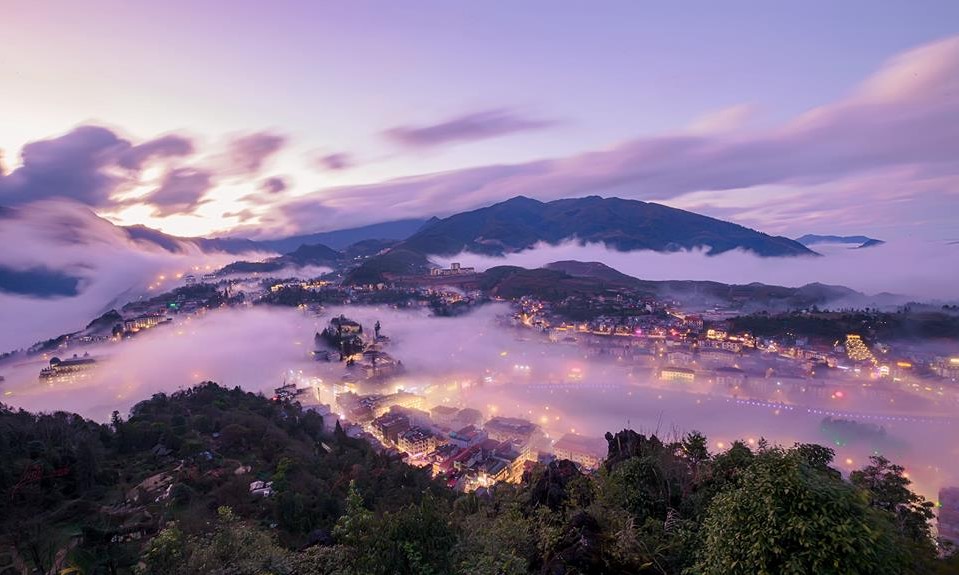
A 10-minute walk from the Cloud Yard, following the stone walls, will take you to the Sky Gate. Here, you’ll be greeted by the radiant sunlight as it shines through layers of clouds, creating an incredibly precious moment. It will become an unforgettable memory of your visit to Ham Rong Mountain. Many famous photographers have made the effort to come here to capture the beauty of the clouds and create stunning art pieces. It’s even more beautiful if you wait until the evening to admire the sunset, making it a perfect and magical experience.
Sapa Telecommunication Station
At an altitude of 2000 meters above sea level, you’ll reach the Sapa Telecommunication Station. From here, you can behold the grandeur of the legendary rooftop of Indochina, perpetually shrouded in mist throughout the year.
Accommodation at Ham Rong Mountain in Sapa
Sapa Legend Hotel & Spa
Sapa Legend Hotel & Spa is an ideal destination that combines comfort with the convenience of luxurious surroundings. It offers a range of modern amenities and is just a few steps away from Ham Rong Mountain.
With a fully equipped and modern accommodation system, the hotel creates a warm and comfortable resort-like atmosphere. The dominant color scheme is white and cream, combined with extremely elegant interior design that seems to beckon travelers to stay a while.
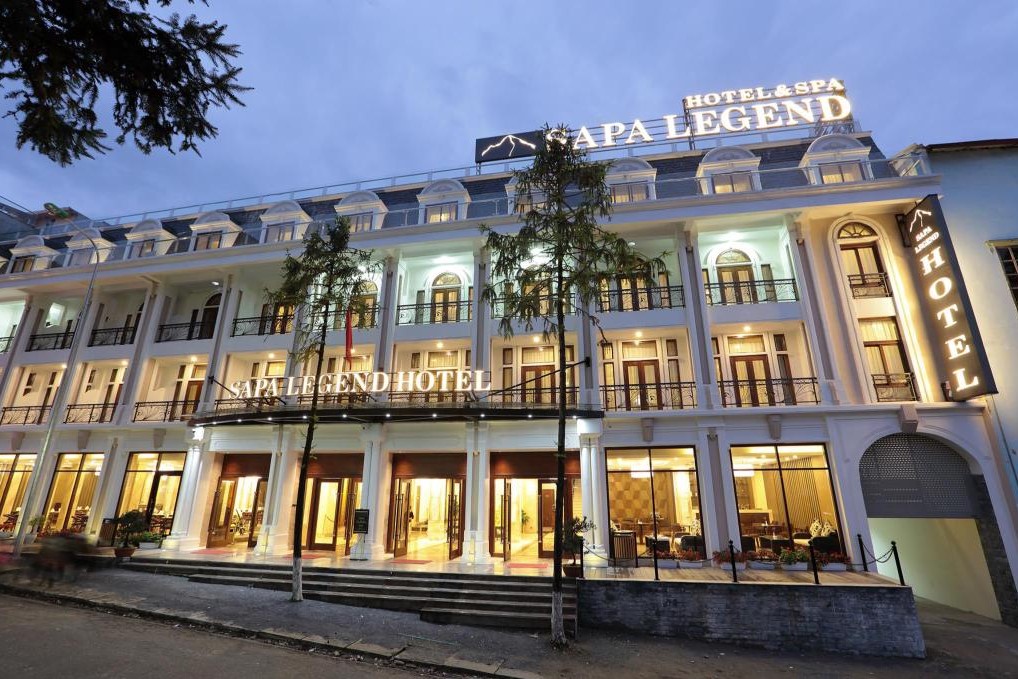
Sapa Legend also impresses guests with its enticing cuisine, featuring a blend of European and Asian dishes as well as local specialties from the Northwestern mountainous region.
After an immersive journey through the misty landscapes or while admiring the terraced rice fields, you’ll be greeted by a professional and welcoming staff.
Sapa Diamond Hotel
Located right in the heart of Sapa town with elegant architecture and highly professional services, Sapa Diamond Hotel is an excellent choice for travelers. Surrounded by magnificent rock formations and clouds, the hotel offers an authentic experience that feels like you’re merging with nature.
The hotel is conveniently situated near the town center, allowing you to take leisurely morning walks and explore various cultural and historical sites in Sapa, such as the Sapa Museum and the Stone Church.
Sapa Diamond Hotel was listed among the top 9 hotels worth staying at in Sapa in 2018. It boasts modern and luxurious design, along with various services such as a bar, restaurant, breakfast service, and airport shuttle.
It promises to be a highly attractive accommodation option for you.
Tourist Attractions in Sapa near Ham Rong Mountain.
Sapa Stone Church
Sapa Stone Church, located on the way to the summit of Ham Rong Mountain, is undoubtedly an attractive tourist destination in Sapa. The church was built in 1895, and to this day, its unique architecture continues to captivate and draw tourists to Sapa. The church remains intact and is preserved by the town’s people as an indispensable symbol of the town.

Cat Cat Village
Just 2 km from Sapa town is the tourist village of Cat Cat. The village is home to the Dao and Hmong ethnic communities. The villagers here still maintain traditional handicrafts such as weaving, cotton cultivation, and linen production. Visitors to the village can also savor traditional dishes of the local people, such as “thắng cố” (a traditional hotpot) and “rượu táo mèo” (apple wine).

Muong Hoa Valley
When traveling to Sapa, tourists should not miss the famous Muong Hoa Valley. In Muong Hoa Valley, you’ll find beautiful terraced rice fields, the Muong Hoa stream flowing through, and many ethnic communities including the Hmong, Tay, and Dao people living in the area.
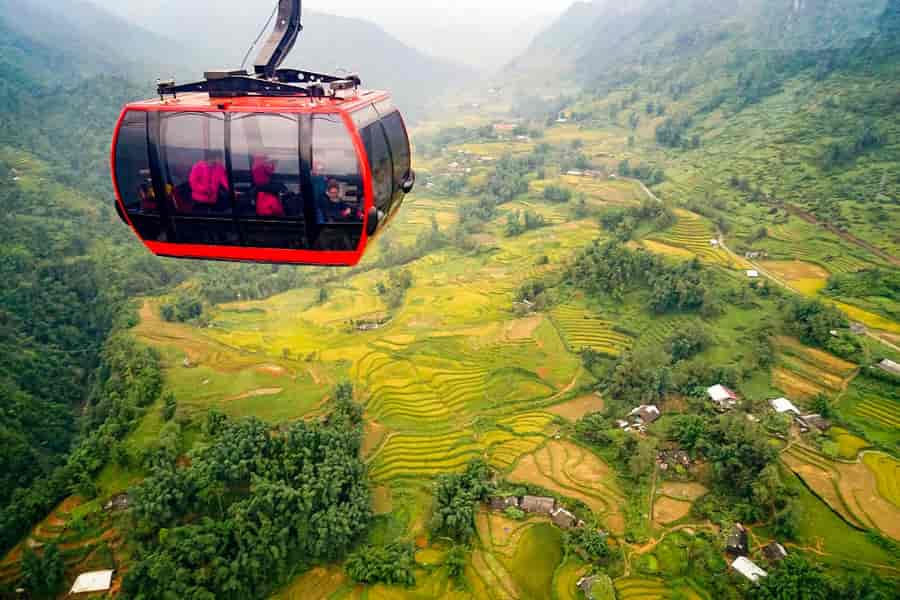
Experience for Exploring Ham Rong Mountain in Sapa:
- Choosing the best time of the year to visit the cherry blossom garden at Ham Rong Mountain is a wise decision when planning a spring trip with family, friends, or colleagues.
- Ham Rong Mountain also boasts various types of cold-climate flowers such as azaleas, medicinal plants, and many other exotic flowers. It’s best to visit Ham Rong Mountain in March or April when the flowers are in full bloom in Sapa. During this time, there is less fog, allowing you to enjoy more beautiful scenery.
- You can also take the opportunity to visit Ham Rong Mountain from April to June if you want to capture the breathtaking images of terraced rice fields during the flooding season, resembling silver mirrors full of enchantment.
- According to the experience of many backpackers and adventure enthusiasts, it’s advisable to avoid the months of July and August because the roads can become slippery due to heavy rain.
I hope that some of the mountain climbing experiences shared by DanangPrivateCar.com’s will help you prepare adequately for your journey to conquer Ham Rong Mountain in Sapa. Ham Rong Mountain will not disappoint you, and I wish all of you a successful ascent of this beautiful peak. If you have any questions, please feel free to contact us through the comments below.


